









By Reine Juvierre S. Alberto
THE Philippines’ current account deficit widened to $17.5 billion in 2024, the second highest recorded since 2022, according to the Bangko Sentral ng Pilipinas (BSP).
at $17.5 billion in 2024, equivalent to -3.8 percent of the GDP. The highest current account
was recorded in 2022, when it reached $18.3 billion.
The 2024 full-year current account deficit expanded by 41.4 percent from $12.4 billion in 2023, which is -2.8 percent of the GDP.
This also exceeded BSP’s projections of a $10.4-billion current account deficit for 2024, equivalent to -2.2 percent of the GDP.
The lower net receipts in trade in services and a higher deficit in trade in goods caused the higher current account deficit, the BSP said.
“However, this was offset partly by higher net receipts in the
primary and secondary income accounts,” it added.
The country’s trade in goods deficit widened by 4.09 percent to $68.7 billion
previous year.
Meanwhile, secondary income net receipts inched up by 1.92 percent year-on-year to $31.7 billion from $31.1 billion.
For the fourth quarter alone, the current account deficit swelled fourfold to $4.6 billion from $1 billion in the same quarter in 2023.
“The increased deficit was driven by a larger merchandise trade gap and lower net receipts in trade in services and primary income accounts. However, this was partially offset by higher net receipts in the secondary income account,” the Central Bank said.
Meanwhile, the 2024 full-year capital account recorded net receipts of $72 million in 2024. This is 2.9 percent lower than the $74 million in 2023 due to lower net receipts in the national government’s other capital transfers.
The financial account also posted $17.6 billion in net inflows (or net borrowing by residents

from the rest of the world) in 2024. This increased by 29.6 percent from the $13.6 billion net inflows in 2023, driven by the reversal of the portfolio investment account to net inflows (from net outflows) and higher net inflows in the direct investment account.
Further, the country’s gross international reserves (GIR) amounted to $106.3 billion as of end-2024. This is higher than the $103.8 billion level recorded as of end-2023.
In terms of the Philippine peso, the currency averaged P57.29/US$1, reflecting a 2.9-percent depreciation from the 2023 average of P55.63/US$1.
By Andrea E. San Juan
THE Philippines has been cited as one of the 30 countries in the world that will see trade growth over the next five years despite “unprecedented uncertainty” on the potential new tariffs, the DHL Trade Atlas 2025 report noted.
“During the next five years, India, Vietnam, Indonesia, and the Philippines are forecast to rank among the top 30 for both speed and scale of trade growth,” it said.
Despite the Philippines’ electronics-centered manufacturing sector receiving “more limited” benefits from supply chain diversification thus far, the DHL report noted that the Philippines will see “substantial trade growth.”
“Indonesia and the Philippines, like Vietnam, have substantial potential to benefit from supply chain shifts and diversification strategies,” the report noted.

THE ability to adapt to emerging technologies has long defined economic powerhouses—a path the Philippines must take by investing in its people and industries, the country’s socioeconomic planning head said.
National Economic and Development Authority (Neda) Secretary Arsenio Balisacan emphasized the need for policies that strengthen human capital development, drive innovation and create high-quality jobs to keep the country competitive.
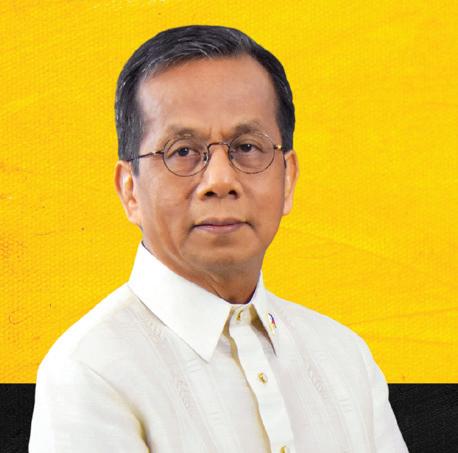
“Without policy changes, the Philippines may face increased distress, disasters, slow progress, and widening inequality,” Balisacan said last Thursday as a lead discussant in a conference by the National Research Council of the Philippines.


Ken Lee, CEO for Asia Pacific, DHL Express, said at a virtual media briefing on Friday that the Philippines has a “diverse and growing” economic landscape.
“Manufacturing, in particular, semiconductors and electronics, automobiles, are all picking up with year-on-year import and export
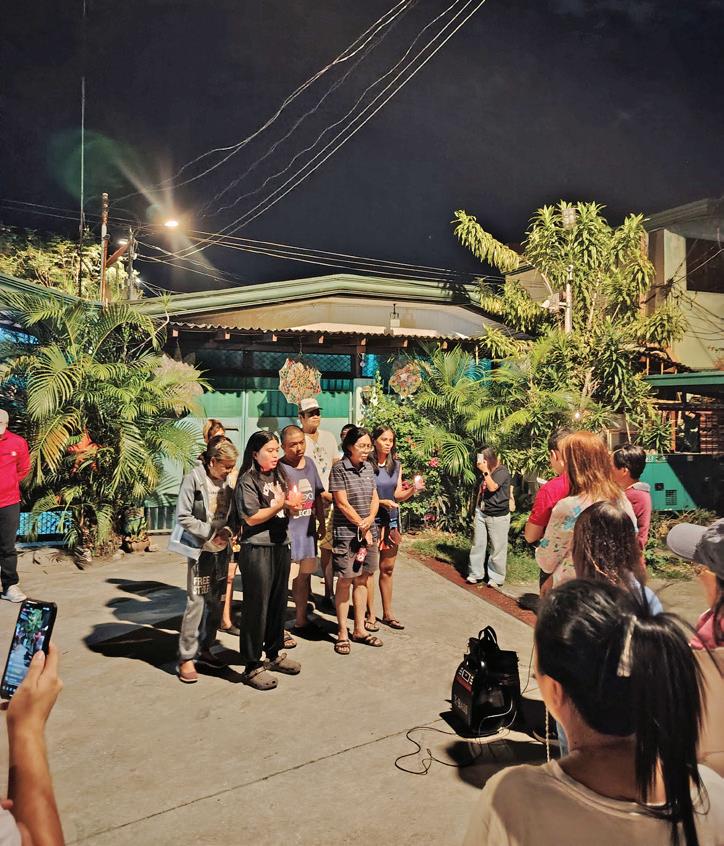


By Aamer Madhani | The Associated Press
DONALD Trump, the real-estate developer turned commander in chief, is laying bare his style of diplomacy in the early weeks of his new term: It’s a whole lot like a high-stakes business deal, and his No. 1 goal is to come out of the transaction on top.
The tactics are clear in his brewing trade war with Canada and Mexico, in his approach to Russia’s war on Ukraine and in his selection of the first country he will visit in his second term.
“President Trump approaches diplomacy and engages in a very transactional manner, with economics as the foundation and driving force behind international affairs,” retired Lt. Gen. Keith Kellogg, the president’s special envoy to Ukraine and Russia, explained at an event in Washington this past week.
For Trump, it’s about leverage, not friendship; dollars as much as values; and hard power versus soft.
It’s not just a matter of negotiating style. At stake is the post-World War II international order as Trump’s actions raise doubts about American leadership around the globe.
He’s shaping a foreign policy that’s more inward looking and con-
scious of the bottom line, dismissing American soft-power levers such as the US Agency for International Development as dubious and riddled by waste and suggesting that the United States might not defend fellow NATO members that aren’t meeting defense spending benchmarks set by the alliance.
Politics and presidents to a certain degree are all transactional. But Trump, who helped make himself a household name by burnishing an image as an intrepid real-estate dealmaker, is taking it to another level as he navigates an increasingly complicated world.
The Republican president, in his previous life as a real estate titan, saw every deal as one in which there were clear winners and losers. In his return to the White House, he is more demonstrably injecting a what’s-in-it-for-me approach to his dealings with both friend and foe.
EDWARD FRANTZ , a University of Indianapolis historian who has studied the American presidency, said Trump’s “ledger” approach might not be the most practical way to conduct diplomacy.
Frantz observed that Trump, 78, a baby boomer and football fan, seems inspired in his foreign policymaking by the ethos of legendary pro football coach Vince Lombardi, who famously said, “Winning isn’t everything. It’s the only thing.”
“But diplomacy, especially in a more complicated world, might be more like soccer,” Frantz said. “Sometimes you just need a tie. Sometimes you need to just survive and move on.”
Trump on Thursday told reporters that he has decided to make Saudi Arabia the first overseas visit of his new term because the oil-rich kingdom has agreed to make a huge investment in the United States over the next four years.
“They’ve gotten richer, we’ve all gotten older. So I said, ‘I’ll go if you pay a trillion dollars, $1 trillion to American companies,’” Trump said. He also made the kingdom his first overseas stop during his first White House term after the Saudis promised $450 billion in US investment.
Trump acknowledged that the United Kingdom, one of America’s oldest allies, has traditionally been the first stop for US presidents. But money talks.

Who has ‘the cards’ matters to Trump IN his dealings with Ukrainian President Volodymyr Zelenskyy and Russian President Vladimir Putin, Trump has highly focused on who has the leverage. Putin has “the cards” and Zelenskyy does not, Trump has said repeatedly.
Zelenskyy appeared to be making some strides in assuaging Trump after their recent rocky meeting in the Oval Office ended with Trump and Vice President JD Vance criticizing the Ukrainian leader for what they said was insufficient gratitude for the tens of billions of dollars in US assistance provided in the three years since Russia invaded.
Zelenskyy said later that how that meeting went down was “regrettable.” He also made clear he was ready to sign off on a minerals deal with the US—even without the explicit American security guarantees sought by the Ukrainians—that Trump wants.
In his Tuesday address before a joint session of Congress, Trump acknowledged Zelenskyy’s fencemending efforts. Trump also announced plans to send top advisers to Saudi Arabia this week for talks with Ukrainian officials.
But soon Trump was back to criticizing Zelenskyy, saying he does not have the leverage to keep fighting the war with Russia.
“I’m finding it more difficult, frankly, to deal with Ukraine, and they don’t have the cards,” Trump said. “In terms of getting a final settlement, it may be easier dealing with Russia, which is surprising, because they have all the cards.”
Trump departs from years of US skepticism toward Russia TRUMP’S push on Zelenskyy—and pivot toward Moscow—marks a sig-
nificant departure from traditional US foreign policy toward Russia since the Cold War.
Others before Trump, including Presidents Bill Clinton, George W. Bush and Barack Obama, have tried resets with Russia, but perhaps never at a time as fraught. Deep skepticism toward Moscow, even in the best moments in the relationship, has been the standard operating posture in both Republican and Democratic administrations.
But Trump, who ran on a promise to quickly end the war, has veered from Democratic President Joe Biden’s approach of making no major decision that could impact Ukraine without Kyiv’s involvement.
At the same time, the new Republican administration has taken steps toward a more cooperative line with Putin, for whom Trump has long shown admiration.
Trump has ordered a pause on US military aid for and intelligencesharing with Kyiv, halted offensive cyberoperations against Russia by US Cyber Command and disbanded a program aimed at seizing the assets of Russian oligarchs as a means to punish the Kremlin for its invasion.
Keeping an eye on the ledger KELLOGG , who also served in Trump’s first White House, recalled seeing Trump’s “transactional diplomacy approach” early in the first term. Kellogg said that the president’s first question in meetings with foreign leaders was often the same.
“As I found the very first time we were in the Cabinet room when a foreign official came in, the comment was, ‘What is the trade imbalance between our two nations?’’’ Kellogg recalled, speaking at the Council on Foreign Relations event.
Continued from A1
The impact of artificial intelligence (AI) and automation was also highlighted. The Neda chief said these advancements could bring both opportunities and risks—especially for low-skilled workers.
“Artificial intelligence and robotics pose significant risks as we expect more automated tasks across industries and the displacement of low-skilled workers,” the he said. “Our country’s ability to learn, adapt, and scale up emerging technologies will depend on its ability to ride the waves of change to create a sustainable future.”
To sustain economic growth, Balisacan underscored the importance of education and skills development, calling for stronger collaboration between the government and the private sector to address skills mismatches and improve learning outcomes.
Education Secretary Sonny Angara had previously noted a disconnect between classroom learning and industry needs, particularly in science, technology, engineering, and mathematics (STEM) education. Despite efforts to promote STEM for over a decade, concerns remain about graduates’ readiness for the workforce. (See: https:// businessmirror.com.ph/2024/11/17/ stem-gaps-widen-as-classroomlearning-lags-behind-careers/) The socioeconomic planning secretary also pointed to two key advantages the country can leverage: its growing working-age population and its global migrant networks. However, he stressed these efforts must go hand in hand with policies that create an attractive business environment.
“We have opened the economy further to investment and trade, improved the ease of doing business, and enhanced the transpar-
Trump last week announced 25% tariffs on many imports from Mexico and some imports from Canada amid widespread fears of the economic fallout from a broader trade war. He then postponed most of them.
The White House insists the pending tariffs are about stopping the smuggling of fentanyl. Trump has also at times suggested that the tariffs could be resolved by fixing the trade deficit.
The president on Friday was back to excoriating Canada, this time complaining about policies he said are hurting American dairy farmers and the lumber industry. He said he will act soon to even the ledger with Canada through reciprocal tariffs.
“Canada has been ripping us off for years on lumber and on dairy products,” Trump said.
Canadian Prime Minister Justin Trudeau, whom Trump has taken to belittling as the governor of America’s 51st state, said his country will not be backing down from Trump’s trade war.
The episode has underscored Trump’s willingness to embrace hard power to resolve differences, even if it means testing one of the world’s most durable and amicable alliances.
The center-left Trudeau was so flummoxed by Trump’s move that he found himself quoting the sharply conservative Wall Street Journal editorial page to make the point that this fight was unnecessary.
“It’s not in my habit to agree with the Wall Street Journal,” Trudeau said. “But Donald, they point out that even though you’re a very smart guy, this is a very dumb thing to do.”
The trade ledger has been top of mind for Trump as he argues that for too long America has been played by friends and adversaries, including neighbors Canada and Mexico.
ency and predictability of the regulatory environment,” Balisacan said. “With proper implementation, these initiatives aim to induce more and higher-quality job creation, technology adoption, and research and innovation.”
He also cited AmBisyon Natin 2040 and Pagtanaw 2050 as roadmaps for the country’s long-term vision, emphasizing that science, technology, and innovation will be crucial in shaping the Philippines’ future. On the sidelines of the event, when Balisacan was asked about the country’s spending on research and development (R&D), he acknowledged that investment levels remain low.
“Our R&D spending is less than 1 percent of GDP. That’s what we have need to work on because there are so many other urgent demands also for our resources,” he said. “But clearly, we have to move to higher levels.”
numbers of the country increasing. I think all factors are pointing that the Philippines is one to watch as well,” Lee said.
Continued from A1 there that there’s been less recent trade growth, so there’s quite a lot of room for acceleration to take place in the Philippines,” he said. “We’re hopeful that that forecast will be realized in the coming five years.”
“While ranked only 129th on the speed dimension over the 2019-2024 period, the Philippines is forecast to rank 15th over 20242029,” the report noted.
On the scale aspect, the Philippines is seen to rise from 68th place to 30th, DHL said.
The report said the Philippines’s trade volume will grow at a 7.4 percent compounded annual growth rate (CAGR) in the next five years.
Breaking down the trade volume growth rate, the DHL report said Philippine exports will see a 7-percent growth rate in the next five years, while its imports will grow by 7.6 percent.
Meanwhile, Steven A. Altman, Senior Research Scholar at the New York University (NYU) and Director of the DHL Initiative on Globalization at the NYU Stern School of Business, explained why the Philippines’ trade volume is expected to grow rapidly in the next five years.
“If we look at the past five years, the trade volume growth rate in the Philippines was only 0.5 percent, so we also have a bit of a base effect
“There isn’t so much a specific catalyst for the acceleration for the Philippines as much as there’s the sense of substantial potential that hasn’t yet been tapped as part of the supply chain reorientation,” he added. Moreover, he emphasized that the capabilities that exist in the Philippines and the industries that “can be served” from the country have a lot of potential.
www.businessmirror.com.ph
THE national government reduced its financial support for state-run corporations in 2024, as subsidies dropped to their lowest level in six years, data from the Bureau of the Treasury (BTr) showed.
Subsidies to state-run firms declined by 15.14 percent to P138.763 billion in 2024 from P163.535 billion in 2023. This is the lowest since the P136.652 billion recorded in 2018.
Finance Secretary Ralph G. Recto told BusinessMirror that the decline in subsidies is “good” as this signals that governmentowned and -controlled corporations (GOCCs) need less budgetary support and have better operating income.
“It may not reduce the deficit but more resources can be invested for human capital and infrastructure,” Recto said.
BTr data showed government financial institutions (GFIs) received P5.580 billion in 2024. This is lower by 11.20 percent from the P6.284 billion GFIs obtained in 2023.
The National Home Mortgage Finance Corporation and Philippine Crop Insurance Corporation were given lesser subsidies in 2024 compared to last year.
Subsidies to the National Home Mortgage Finance Corporation (P112 million) and Philippine Crop Insurance Corporation (P3.150 billion) were smaller in 2024 compared to last year.
Meanwhile, the Bangko Sentral ng Pilipinas and the Philippine Deposit Insurance Corporation were given P40 million and P58 million, respectively, in 2024.
Budgetary support to major non-financial government corporations, however, increased by 27.74 percent to P95.414 billion in 2024 from P74.697 billion in 2023.
This is due to higher subsidies extended to the National Electrification Administration (P4.002 billion), National Food Authority (P11.250 billion) and National Irrigation Administration (P71.208 billion).
Subsidies to the Light Rail Transit Authority and National Housing Authority, meanwhile, went down to P864 million and P5.531 billion in 2024, from P1.053 billion and P18.273 billion, respectively.
Other GOCCs obtained a total of P37.768 billion in 2024, significantly lower by 53.97 percent from P82.056 billion in 2023.
The Bases and Conversion Development Authority (P2.228 billion), National Dairy Authority (P523 million) and the Philippine Children’s Medical Center (P1.8 billion) received reduced subsidies.
The Philippine Health Insurance Corporation’s (PhilHealth) subsidies plummeted by 428.65 percent to P9.599 billion in 2024 from P50.746 billion in 2023.
PhilHealth will not be receiving any budgetary support from the national government after the Bicameral Conference Committee removed its subsidy.
This year, subsidies to GOCCs will even be lower to P127.427 billion based on the state’s budget documents. This went down by 32.30 percent from P188.229 billion in 2024.
Juvierre S. Alberto
Reine
By Rex Anthony Naval
THE Armed Forces of the Philippines (AFP) announced that all of its units took part in the first quarter Nationwide Simultaneous Earthquake Drill (NSED) that took place in the City of Sta. Rosa, Laguna Thursday afternoon.
In a statement Friday, it said military and civilian personnel of the AFP took part in the largescale preparedness exercise aimed at enhancing earthquake response capabilities and ensuring readiness in the event of a major seismic event.
The NSED, a nationwide initiative, aims to enhance public awareness and preparedness for earthquakes.
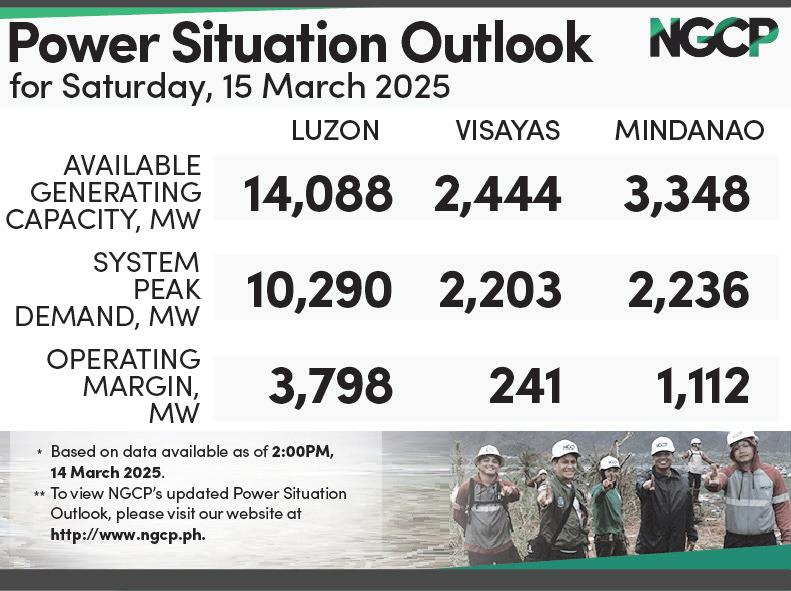
By Reine Juvierre S. Alberto
THE maximum deposit insurance coverage (MDIC) for depositors may further increase in the coming years if warranted by economic conditions, according to the Philippine Deposit Insurance Corporation (PDIC).
In a press briefing on Friday, PDIC General Counsel Maria Antonette I. Brillantes-Bolivar said the MDIC can be increased every three years but only if warranted as a result of a review.
PDIC President Roberto B. Tan said the amendment of the staterun deposit insurer’s charter in 2022 allowed it to be more respon -
sive to adjustments instead of going through a “tedious” congressional legislation process.
“We would like to provide more protection to depositors,” Tan said.
The PDIC Board of Directors can now adjust the MDIC based on inflation and other relevant economic indicators without the
need for legislation, according to its new charter.
The MDIC will be reviewed every three years and the PDIC Board of Directors is authorized to increase it, if necessary.
In February this year, PDIC doubled the insurance coverage for bank deposits to P1 million per depositor from P500,000. (See: https://businessmirror.com. ph/2025/02/28/pdic-hikesmaximum-deposit-insurancecoverage-to-p1m/)
The MDIC was last adjusted 16 years ago in 2009, coming from P250,000.
PDIC Vice President Jose G. Villaret Jr. said the new MDIC was determined based on inflation and the ratio of MDIC to GDP per capita of comparable economies.
TBy Ada Pelonia
HE Department of Agriculture (DA) seized over P2 billion worth of smuggled farm goods last year.
The DA Inspectorate and Enforcement (DAIE) unit said it conducted 71 operations, which yielded P2.83 billion in smuggled agricultural commodities in 2024.
These seized commodities were nearly a billion higher than the previous year’s P1.87 billion, it added.
The drill featured various scenarios, including aerial damage assessment, hazardous materials response, collapsed structure search and rescue, jailbreak situations, vehicle extrication.
The NSED saw participation from over 1,300 local government units and numerous private sector organizations, coordinated by the Office of Civil Defense (OCD).
The exercise aims to enhance preparedness for seismic activities, particularly with the looming threat of the “Big One” or a devastating earthquake. Increased involvement was noted from various partners, including special education schools, the Laguna Technopark Association, Inc., Enchanted Kingdom, Angkas, and the Armed Forces reserve force.
In Camp Aguinaldo, Quezon City, the drill involved practicing the “duck, cover, and hold” technique, followed by a simulated evacuation to designated safe zones.
See “AFP,” A4
LOOKING for a job?
The Department of Labor and Employment (DOLE) is bringing employment opportunities closer to Filipino job seekers through nationwide job fairs that offer thousands of local and overseas job openings this March.
Aligned with the Marcos Jr. administration’s push for poverty reduction and inclusive growth, the Labor Department will be conducting more job fairs in all regions. These fairs are a crucial job-generation measure to sustain post-pandemic employment gains and drive economic transformation.
President Ferdinand R. Marcos Jr., highlighted the government’s commitment to making job fairs a regular nationwide initiative, ensuring accessible job opportunities beyond Metro Manila during the Career Con 2025 held in January. These job fairs are part of the administration’s broader commitment to job generation, as outlined in the 8-Point Socioeconomic Agenda, the Philippine Development Plan 20232028, the Philippine Labor and Employment Plan 2023-2028, and the Trabaho Para sa Bayan Plan.
Agriculture Secretary Francisco Tiu Laurel Jr. noted that the recent passage of the Anti-Agricultural Economic Sabotage Act provides the DA with additional tools to combat smuggling, which undermines farmers’ livelihoods and threatens public health.
“Last year’s operations exposed regulatory loopholes we need to address and procedures that must
be streamlined to stamp out smuggling of agricultural products,” Laurel said in a statement.
The DAIE, led by Undersecretary Carlos Carag, revealed that the largest single seizure occurred during the first border inspection of imported rice worth P1.9 billion. This was followed by fisheries products with seizures worth P316.4 million.
Other operations included preventing the recycling of 90.2 MT of condemned meat worth P74.9 million for fish meal use. It added that in Santa Maria, Bulacan, the agency oversaw the condemnation of P102.2 million worth of confiscated Chinese frozen food and black chicken.
The agency noted that in September, the DA confiscated P115 million worth of white onions and P8.4 million worth of cigarettes.
In November, inspections at the Port of Manila led to the seizure of
About P5.296 trillion of deposits are now insured by the PDIC, equivalent to 24.1 percent of the P21.97 trillion total deposits in the banking system.
Tan assured that the deposit insurance fund (DIF) is adequate to cover the expected risks of banking closures in the country.
“We have enough funds to cover all these closures that may happen. And there’s also some methodology in trying to project that,” Tan added.
The DIF stands at P236.95 billion, with a 5 percent ratio of DIF to estimated insured deposits, as of December 2024.
PDIC paid P236 million to depositors of three banks that closed in 2024.
Some 147 million or 98.6 percent of total deposit accounts will be fully insured. This includes savings, demand and time deposit accounts as well as negotiable order of withdrawal and long-term negotiable certificate of time deposits.
DA: Govt seized over ₧2B of smuggled
frozen mackerel valued at P178.5 million. These were donated to victims of Typhoon Kristine after testing confirmed the fish were fit for human consumption.
The DAIE said a second border inspection of unlicensed cold storage facilities last May in Kawit, Cavite yielded 99.9 metric tons (MT) of contraband meat and other products worth P100 million.
In Navotas, two cold storage facilities contained P35.9 million worth of white onions, P13.5 million worth of carrots, and P44,000 worth of tomatoes and mushrooms.
A raid in Marilao, Bulacan showed smuggled goods, including rotten onions and garlic, pigeon meat, and frozen bullfrogs, worth P100 million.
Meanwhile, the DAIE said it seized P162.7 million worth of illegal agri-fishery products from various entry points during the
first two months of 2025 in collaboration with the Bureau of Customs (BOC) and other agencies Among these entry points are the Ninoy Aquino International Airport, Manila International Container Port, and Subic Bay International Terminal. Furthermore, inspections of cold storage facilities in Caloocan, Navotas, and Bulacan between January and February revealed several violations, including expired agricultural products and unlabeled boxes.
A total of 33 MT of meat worth P6.45 million were confiscated for disposal, while P152,000 worth of frozen fish were seized in Batangas City.
“These operations reflect the DA’s ongoing commitment to protecting the country’s agricultural sector, safeguarding public health, and ensuring fair trade practices.”
By Jovee Marie N. Dela Cruz
ACLOBAN CITY—House
TSpeaker Ferdinand Martin G. Romualdez has vowed to secure a resounding victory for the senatorial candidates of President Ferdinand “Bongbong” R. Marcos Jr.’s Alyansa Para sa Bagong Pilipinas in the upcoming May 12 elections.
Hosting President Marcos Jr. and Alyansa candidates in Tacloban City and Leyte, Romualdez
confidently declared that the administration ticket would dominate the polls in the province.
“I promise that the candidates of our president will win big here in Tacloban City and Leyte. We will deliver a big victory for the Alyansa ticket,” Romualdez said.
Romualdez emphasized that Leyte remains a stronghold of both the Marcos and Romualdez families, with unwavering support for President Marcos Jr. expected to translate into votes for the Alyansa
According to the Philippine Statistics Authority, the country’s employment rate reached 95.7 percent in January 2025, slightly improving from 95.5 percent in January 2024.
In terms of actual figures, 48.49 million Filipinos were employed in January 2025, an increase from 45.90 million in January 2024 and 48.16 million in October 2024, respectively.
In his official statement on the January 2025 Labor Force Survey, DOLE Secretary Bienvenido E. Laguesma said the DOLE “will continue to promote the Trabaho sa Bagong Pilipinas through
monthly or bi-weekly job fairs, linking vulnerable groups to sustained income opportunities, and support MSMEs through accelerated Adjustment Measures Programs initiatives in the countryside” to further strengthen the labor market.
Laguesma also noted that the digitalization of public employment services (PES) will be pursued to enhance accessibility, streamline processes, and increase efficiency for job seekers and employers via platforms like PhilJobNet and the PESO Employment Information System.
senatorial slate.
“The support for our President is broad and strong. I am sure that this will translate into votes for Alyansa candidates on May 12,” he said.
He added that Tacloban, Leyte and Eastern Visayas will choose candidates who would help President Marcos Jr. in his aspiration of making life better for all Filipinos and delivering progress to the provinces, including remote communities.
Romualdez recalled that in the 2022 presidential elections, Leyte delivered 641,065 votes to then candidate Ferdinand Marcos Jr., and his closest rival received only 99,207 votes.
Leyte is the home province of the President’s mother, former First Lady Imelda Romualdez Marcos, who once served as representative of the province’s first congressional district.
See “Romualdez,” A4

By Manuel T. Cayon
DAVAO CITY—Neighbors
of former President Rodrigo Duterte on Thursday banded together to protect his house against any possible attempts to break into his house and plant evidence.
Duterte’s house to follow up unverified reports circulated on social media that police had raided Duterte’s house and that people had reportedly already converged outside Duterte’s house holding a rally.
“We are ready to protect his house here. We will not allow them to plant evidence and incriminate ‘Tatay Digong’,” said the elderly man.
Neighbors told reporters that jeeploads of supporters from at least three barangays had attempted to hold a rally outside Duterte’s residence but were advised by police to hold their rally instead at the Rizal Park, near City Hall downtown.
SMC
removes 88,000 tons
of waste from Biñan River
SAN MIGUEL CORPORATION (SMC) has delivered on its promise to clean up Laguna’s Biñan River in less than a year, freeing up the clogged waterway of nearly 88,000 tons of silt and solid waste that had long worsened flooding in the city of Biñan.
Completing the massive task in less than seven months, SMC’s Better Rivers PH initiative covered a 3.2-kilometer stretch of the river from the mouth of Laguna Lake near Barangay Dela Paz to downtown Barangay Poblacion—where hundreds of families had long been tormented by lingering floodwaters during the typhoon season.
An elderly man who stood as their de facto spokesman told reporters here, on condition that he will not be named, that families along Sapphire Street in Dona Luisa Subdivision had agreed to conduct vigil and nightly patrol since Wednesday to prevent suspected persons from entering Duterte’s house and plant incriminating evidence.
A team of lawyers from Duterte’s camp, accompanied by barangay officials, also gathered outside his house on Thursday after they also got the fake post that it has been raided.
Many of them came out on Thursday night to mingle and inquire into the presence of a throng of reporters whose vehicles occupied the street and were blocking driveways. The reporters also trooped to
They expressed concern after the National Police pulled out the security detail of Duterte, including the closein members of the Presidential Security Group.
More people have converged outside Duterte’s house, prompted by live coverage of the neighbors’ coming out and speaking to reporters.
At the Dutertes’ ancestral house along Royal Valley Subdivision, some 8 kilometers south of downtown, two civilian residents positioned themselves across and there was an instance that two persons on a motorcycle had conducted surveillance of the house. They sped away when confronted and left the motorcycle along the highway.
‘Women exit workforce due to lack of maternity benefits’
By Justine Xyrah Garcia
THE absence of maternity benefits remains a key factor forcing women out of the labor force as many female workers face pregnancy discrimination and inadequate parental leave policies.
National University of Singapore Adjunct Professor Maria Monica Wihardja said on Friday that many women leave formal employment early—especially after pregnancy and childbirth— because their jobs do not provide maternity protections.
“The types of jobs that loweducated female workers have before pregnancy and childbirth are such that they don’t come with any workers’ benefits,” Wihardja said.
She pointed out that this is common in sectors like contract-based teaching and nursing, where jobs may be considered formal but still lack essential protections such as
paid leave and job security.
As a result, many women are left with no choice but to stop working altogether.
This observation is reflected in the global labor force participation rate of women.
Based on the International Labor Organization’s (ILO) data, it is estimated that less than half, or a mere 47 percent, of workingage women are in the labor market, compared to 72 percent of men.
A major reason for this is the unequal burden of unpaid care work, along with the lack of paid parental leave and employment security.
ILO earlier said that 708 million women across the world last year were kept out of the workforce due to unpaid care duties. In contrast, only 40 million men cited caregiving as their primary reason for economic inactivity.
“Societal expectations and norms around caregiving further
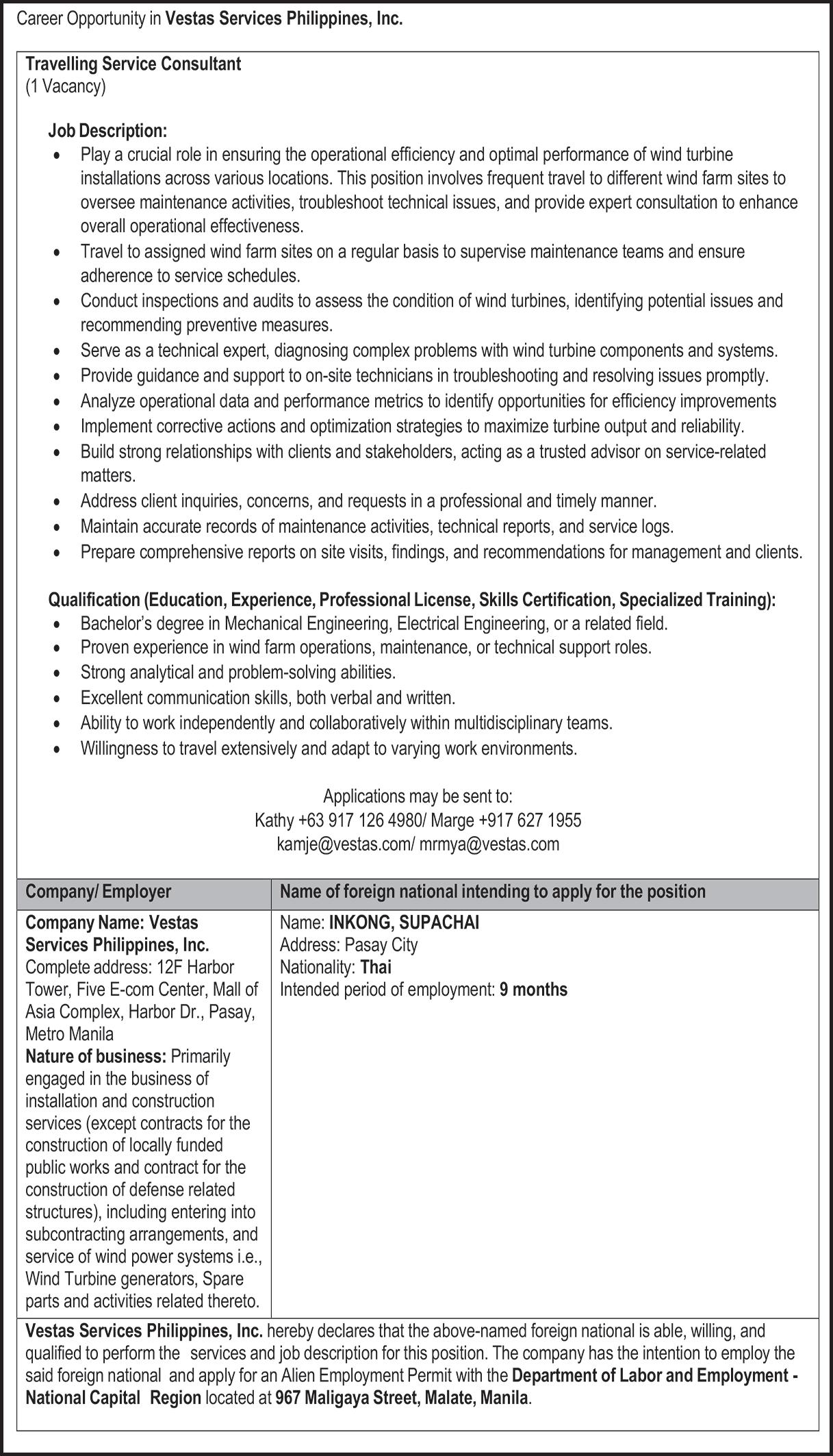
restrict women’s labour market inclusion, and deepen gender inequalities,” Sukti Dasgupata, Director of ILO’s Conditions of Work and Equality Department, said.
Reintegration challenges
HOWEVER , even when women try to return to work after childbirth, they still struggle to find quality jobs.
Wihardja noted that many shift to self-employment or informal work, particularly in e-commerce, because of the flexibility it offers.
This trend is evident in countries like Indonesia, where a 2019 labor force survey by the World Bank found that 60 percent of internet-using women who left their jobs due to pregnancy and childbirth turned to e-commerce.
Yet, a 2021 Shopee survey revealed that many of them sell beauty and childcare products— items that typically generate lower profits.
“The study shows that being a homemaker and selling traditionally feminine products are associated with lower sales,” Wihardja said. “Homemakers are constrained by time, having to balance family chores and work, while low-value items do not generate sufficient income.”
She said that reintegration programs should go beyond reskilling and tackle deeper issues, such as access to affordable childcare.
“Moving forward, tailored business training for women with young children, along with reliable and affordable childcare options, would help,” Wihardja said, adding the need to challenge societal expectations around caregiving.
Continued from A3
The ‘motherhood penalty’
THE lack of maternity protections also contributes to what experts call the “motherhood penalty,” where women face lower wages, fewer career opportunities, and even job loss after having children.
To address this, Gender Specialist Harumi Toyama from the Asian Development Bank said businesses play a crucial role in helping women return to the workforce.
She noted that companies benefit from retaining female talent by adopting policies such as equal hiring practices, parental leave, and anti-discrimination measures.
“If women are unable to return to the labor market, that is lost talent. Many companies struggle to retain a skilled workforce, and the cost of staff turnover is significant,” Toyama said
She added that companies with diverse leadership teams tend to perform better than those with less diversity.
Toyama also stressed the importance of flexible work arrangements, which have become more widely accepted since the Covid-19 pandemic.
A 2024 ILO study found that options such as remote arrangement and flexible working hours increase the likelihood of women staying in the workforce, even after childbirth.
“It’s important for the company to ensure that this type of equality and diversity measures are really part of corporate culture,” the gender specialist said.
Toyoma said fostering a safe and supportive work environment leads to higher well-being and productivity for everyone—not just for women.
The Tacloban rally is the 9th campaign sortie of the administration Alyansa slate as it seeks to consolidate support in key regions ahead of the May midterm elections.
Around 100,000 people attended the Alyansa slate rally in Tacloban.
With 1.4 million registered voters, Leyte has long been a political stronghold of the Marcoses and Romualdezes.
The Alyansa ticket is composed of former Interior and Local Government Secretary Benhur Abalos, Makati City Mayor Abby Binay, Senator Ramon Revilla Jr., Senator Pia Cayetano, former Senator Panfilo Lacson, Senator Lito Lapid, Senator Imee Marcos, former Senator Manny Pacquiao, former Senate President Vicente Sotto III, Senator Francis Tolentino, ACT-CIS Representative and former Social Welfare Secretary Erwin Tulfo, and Deputy Speaker and Las Piñas Rep. Camille Villar.
“Dati po matagal bago humupa ang baha. Nitong Pasko (December 2024), may malakas na ulan pero hindi na umakyat ang tubig dito. Yung ilang lugar na binaha, mabilis nang bumababa ang tubig,” recalled Herminigildo Aguilar, 64, a councilman or kagawad in Barangay Poblacion. “Maluwag na ang ilog, mas mabilis nang umaagos ang tubig.”
[Floodwater used to linger for days. But after a heavy downpour last Christmas, water from the river did not swell into the coastal village and floodwater from the rain drained faster to the river.]
Since 2020, SMC’s Better Rivers PH program has been moving from one river system to another, restoring the natural depth and breadth of river channels in Metro Manila and Luzon at zerocost to government. By clearing silt and garbage, the initiative has helped mitigate flooding, ease water flow, and improve water quality.
This voluntary effort by SMC reached Biñan River in August last year through close coordination with Mayor Walfredo “Arman” Dimaguila, Jr., who also identified an area in Barangay Malaban as the LGU’s collection point for the extracted wastes and silt from the river.
Jeorge Total, 49, SMC’s team leader for the Biñan river cleanup, said four teams equipped with backhoes and barges were deployed to do the job. “Grabe ang basura nung dumating kami dito. Nagpulo-pulo na. Hindi kami makakain sa tabi kasi talagang mabaho. Ngayon wala ka nang maamoy,” Total said.
[When we arrived, the garbage was unimaginable – mounds of them above water. We could not eat our meals because of the stink. Now, you won’t smell anything.]
A challenge for the cleanup crews were narrow sections of the river in the city proper where barges carrying the backhoes could not maneuver, so cranes had to make a tight entry through the city to reach the riverbanks, Total said.
Upon completion last February 28, the SMC initiative removed a total of 87,899 tons of silt and garbage from the Biñan River through a winding stretch of 3.2 km. The largest volume removed was at the mouth of the river in Laguna Lake, where the natural river channel was practically blocked going out to the lake.
“I am very happy that our river cleanup initiative marked another achievement in Laguna, through the help and cooperation of the local government and our other partners,” SMC Chairman and CEO Ramon S. Ang said in a statement.
“I ask all our kababayans to please help take care of our rivers because they are critical to our health and the health of our environment, economy, and communities. The job of making our rivers better is not just the government’s or the private sector’s responsibility. What happens to our rivers affects us all, so we all have a role to play,” he added.
Before reaching Biñan, the Luzon-wide program’s first stop in Laguna was at San Isidro River in San Pedro. The cleanup began in August 2023 and was concluded a year later, after the extraction of 417,044 tons of silt and waste from a 5.3-kilometer stretch of the river.
As a result, communities near San Isidro River were spared from severe flooding episodes brought about by consecutive typhoons late last year, including Typhoon Kristine. SMC’s river cleanup is now back in San Pedro, Laguna to clean up its Tunasan and Landayan Rivers.
As with its previous river cleanup operations, SMC conducted aerial, topographic and bathymetric surveys of the rivers, before plotting their course of action. This ensured prioritization of critical areas and an environmentally sound extraction of waste and silt— something SMC applies in every river rehabilitation effort.
Overall, Better Rivers PH has covered a total of 157.29 km of waterways, removing a total of 8,248,254 metric tons of silt and solid waste as of March 12, 2025.
This includes 1.12 tons from 10.9 km of Tullahan River; 1.18 tons from 26 km of Pasig River; 322,739 tons from 7.61 km of San Juan River; 694,372 tons from 26.3 km of Pampanga River; and 4.13 tons from 74.75 km of the Bulacan River System.
Continued from A3 OCD administrator Undersecretary Ariel F. Nepomuceno stressed the Philippines need for improvement in earthquake preparedness.
“We have a lot of catching up to do. One of the most vital actions we need to focus on involves engineering solutions. We appeal to our local government units to be strict in the issuance of building and occupancy permits,” he added.
Nepomuceno also stressed the necessity of continued exercises to build the collective muscle memory of the public on what to do during the first few minutes and hours and even the first day of any huge calamity such as an earthquake.
“The Philippines top ranking in the World Risk Index is a clear proof of the long road ahead. We cannot get tired, we cannot surrender. It is our duty to save ourselves, our loved ones, and also our community members if we have the chance when a major disaster strikes.”
Meanwhile, Defense Secretary and National Disaster Risk Reduction and Management Council chair Gilberto Teodoro Jr. urged the public to refrain from getting tired of quarterly earthquake drills.
“We have to train not only our students, but everyone, including people on the streets, building administrators, and building occupants on the roles they have to play to form conditioned and automatic responses to earthquakes and save more lives,” Teodoro said.
To these Black retirees, the federal civil service now under attack was a path to middle class
By Gary Fields | The Associated Press
ASHINGTON—Evelyn
WSeabrook was able to buy a home even though she had only a high school diploma. Glenn Flood worked his way up the career ladder to become a public affairs officer for former Defense Secretary Donald Rumsfeld. And Calvin Stevens had a dual military and federal service career that took him to high levels in both.
Now in their late 70s and early 80s, the three retirees are part of a generation of Black Americans who used the military and federal civil service to pursue the American dream. They acknowledge there were challenges. But they believe they received more opportunities in the military and as government employees than they would have in a private sector where racial discrimination and patronage were common at the time they were ready to enter the workforce.
“I am glad I chose to be in federal service,” Seabrook said. “Even with all the drawbacks, my personal life was enhanced by my federal job.” Seabrook, Flood and Stevens have more than 120 years of combined military and federal service. As leaders in various capacities in the National Active and Retired Employees Association, they are plugged into the siege federal employees are under during the opening weeks of President Donald Trump’s second term. It started with the elimination of programs promoting diversity, equity and inclusion and has expanded to a culling of the federal workforce under Elon Musk, a special adviser to the Republican president. Musk also seeks to eliminate agencies as head of the Department of Government Efficiency, or DOGE.
They say one thing being lost in the attacks on the federal workforce is its important history as a stepping stone into the middle class for minorities when paths were limited, in particular for Black Americans.
Speaking from their homes near Orlando, Florida, and in Decatur, Georgia, and Palm Springs, California, the retirees said when they came into the military and federal service decades ago, the push wasn’t about diversifying the workforce. Rather, the opportunities were about ending the discrimination that left qualified people of color on the outside of many workplaces.
Then-President Lyndon Johnson addressed the problem of employment discrimination through law and executive order. That opened the door wider to the US Postal Service, the military and many other federal jobs where Black professionals got their first chance to pursue executive-level jobs, said Marc Morial, president and CEO of the National Urban League. “The progress in federal civilian employment was far faster and far greater than it was in the private sector,” which was “far slower to create the opportunity to run nondiscriminatory hiring practices,” he said. The result was a rise in the Black middle class, especially in places like Washington, D.C., where workers entered the system in lowerlevel jobs but rose through the ranks based on performance, he said.
“At one point, DC had the highest median income for African Americans in any city in the country,” Morial said. For now, the federal government is the largest single employer in the US with about 3 million workers, which includes 600,000 with the US Postal Service but not the active duty military. While Black Americans are nearly 14% of the population overall, they make up nearly 19% of the federal workforce.
Proud of being hired and promoted on merit
SEABROOK , 80, began her Social Security Administration career in New York City in 1966 and worked for the federal government for more than 39 years. The irony of hearing and seeing DEI used as a signal for unworthiness is that there was no affirmative action or special programs to recruit people like her when she started working.
“The only initiatives I have seen was if you were a veteran” and points were added to your test score, she said from her home in Florida. “In terms of eth-

nicity, culture, race, that wasn’t even part of the picture. We weren’t thinking about it then.” Even the full impact of the Civil Rights Act of 1964 came years after she started working. She took tests and those scores led to interviews. Preferences weren’t “part of my life or how I got promoted or not. I got promoted because I could understand the work. I never went in under incentive programs.”
Her own career path was not entirely smooth and included complaints to the Equal Employment Opportunity Commission. Nevertheless, she continued moving up in positions and even helped train new employees. “It certainly was very helpful in me maintaining a level of living that I probably could not have done elsewhere,” Seabrook said.
Middle-class life not something to take for granted
FLOOD, 78, was a Navy officer who also served in the reserves and at the Pentagon, where he was one of the regular briefers for former Secretary of Defense Donald Rumsfeld. He said federal service was instrumental in helping people of color show their abilities.
Flood said the times now are “scary” because of the impact on the federal workforce and how departments and agencies are responding to the administration’s moves to gut them: “There’s important work out there, and not everything is in D.C,” he said from his home in the Southern California desert.
His old department, Defense, issued instructions saying it would no longer acknowledge Black History Month, Native American Heritage Month or similar commemorations of culture and history. But he said recognizing that history is important to show how far certain groups have come.
His father also was in the Navy but could serve only as a steward.
“I am very proud of my civil service and my Navy career” and its role in his “middle-class life,” Flood said. “That was not something you could take lightly.”
Saddened to see the civil service under attack
STEVENS, 77, spent 31 years in the Air Force and Air Force Reserves and more than three decades with the General Services Administration. He, like Flood and Seabrook, said his experience wasn’t always smooth, but that he had mentors who helped.
As his career went forward, he would take it upon himself to get whatever training he needed, paying out of his own pocket so he could advance. One goal was to serve as a role model and mentor for others, and he suggested that recruitment efforts include Historically Black Colleges and Universities in the Atlanta area, where he was based and now lives. He recalls people of color coming into the service with degrees, often advanced ones. He realizes that some might have viewed him merely as an affirmative action hire, “but I met the qualifications,” he said. “I was educated and I was trying to advance, taking classes on my own” to train and prepare for each position he sought. Stevens said his military and federal career gave him a blessed life, and that he is saddened to see the whole system under attack.
“A lot of people went to the federal sector because that was a middle-class opportunity,” he said. “Some did have degrees and some did not, but they felt that the government, their positions, were secure. They had benefits and they feel that they had a fair opportunity for promotion.” Associated
Editor: Angel R.
THE Philippines is renowned for its rich healthcare tradition and the genuine warmth of its people. Filipino caregivers are highly sought after worldwide due to their dedication, strong work ethic, cultural sensitivity, and proficiency in English.
Previously, Filipinos wishing to work as caregivers in the UK only needed a job offer from a UK-approved employer and to meet English language requirements to apply for a Health and Care Worker visa. However, recent policy changes mean that the UK government will now require care sector employers to hire migrant workers already in the UK before recruiting from abroad. This move aims to reduce the significant influx of individuals arriving through legal channels.
New rules announced on Wednesday mean employers in the social care sector, who look after elderly and disabled clients, must first prove they attempted to recruit international workers in the UK who need a new employer.
The Home Office is increasingly worried that rogue employers are abusing the Health & Care Visa route, which was introduced in 2020 in response to rising staffing vacancies in the care sector as Covid-19 hit and Brexit prompted many European Union workers to leave the UK.
It created a fast-track system allowing care businesses to recruit from abroad by sponsoring a worker, and more than 300,000 people—or almost 745,000 including their dependents—have entered the UK on such a visa up to the end of 2024. They are only able to work for their sponsoring employer, bar 20 hours a week they can complete for another employer in the same sector.
However, Bloomberg has spoken to more than 50 migrant care workers who claim they were illegally charged thousands of pounds for their Certificates of Sponsorship, given to them by UK employers. While some were able to work when they came to the UK, others were told that their employer didn’t actually have any hours for them, so received no salary.
Prime Minister Keir Starmer has vowed to reduce migration to the UK, which hit a record of 906,000 in the year to June 2023 and is still historically high. Concerns around the pressure this is placing on public services prompted protests which

descended into right-wing violence shortly after Labour took office last summer.
Between July 2022 and December 2024, the government has revoked more than 470 sponsor licenses in the care sector due to allegations of abuse and exploitation, the Home Office said. More than 39,000 workers have been associated with these sponsors since October 2020, and the Home Office was only able to confirm that around 10,000 of those people had been able to find a new role.
“Those who have come to the UK to support our adult care sector should have the opportunity to do so, free from abuse and exploitation,” said Seema Malhotra, minister for migration and citizenship.
The Home Office did not disclose in its statement how it would police
whether care employers had tried to recruit domestically. It said more information would be included in its Immigration White Paper, which is due in the first half of this year. Care workers’ minimum salary thresholds will be updated to reflect the latest official pay data, ensuring all staff are paid a minimum of £12.82 ($16.632) per hour. The Home Office also announced changes to the Short-Term Student route, which was designed for those studying an English language course in the UK for 6 to 11 months. It is concerned that this route is being abused by those who have no intention to leave the country when their visa expires, and the new rules will give caseworkers new powers to reject applications which they suspect are not genuine. Bloomberg
Can one have a life of faith outside religion?
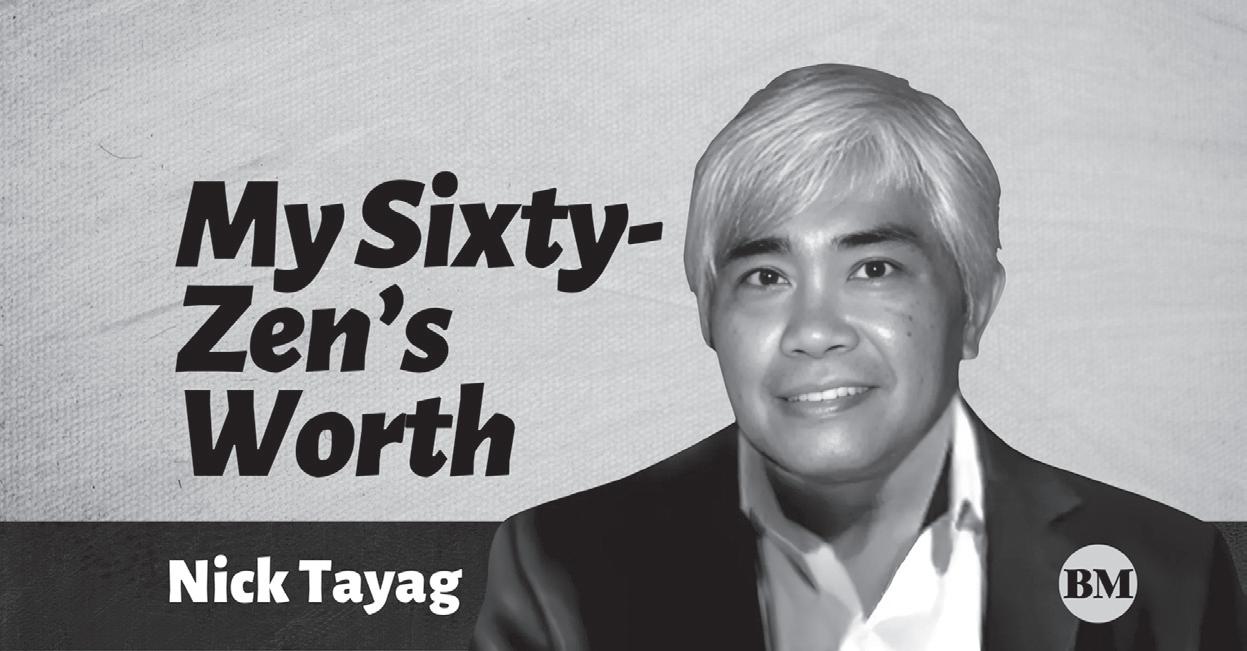
FOR many years now, I have gradually and quietly become what you may call “spiritually independent.”
I’m now in my early seventies, and my personal faith practice is now beyond “religion.” To put it another way, what I believe as a Catholic has gone beyond the traditional walls of received doctrines and trappings of religious rituals and practices.
The late Thomas Merton was a person after my own heart. As early as in High School, I read his books, notably “Seven Storey Mountain” and “Seeds of Contemplation.” He became a monk of the Trappist order. Later in his life, he became a scholar of comparative religion and an ardent proponent of interfaith understanding. He died in 1968, and later one writer noted: “He outgrew the traditional theological forms of his Christian home base, but one can also see this as moving beyond Christianity’s theological boundaries in ways that still embrace its habitat and center.”
I couldn’t put it better to describe the arc of my own spiritual evolution.
As I grow older, I find myself becoming more spiritually hungry. I seek food that nourishes my spirit beyond what traditionally accepted Catholic beliefs and practices can give me. Thus, I am open to any enlightenment from other sources that can help sustain the vitality of my faith practice
Mahatma Gandhi talks about “the many-ness of Truth.” He says: “Truth is one, paths are many.” For him, Truth (or Satya) is God. Truth doesn’t have to be exclusively from the bible, traditional
churches, priests, or pastoral ministers. The horizon of deep spirituality should be wide open for us, unconstrained by dogmatic gatekeepers. To continue to only pay attention to teachers in our own tradition is to miss a golden opportunity to expand and deepen our spirituality by learning from the sacred texts and practices of others.
In fact, our era has been called the “age of inter-spirituality” by spiritual mentors who point out that there is an increase in the sharing of wisdom and practices among people coming from different spiritual traditions. One example is Harvey Kushner, a Jewish Rabbi and author who is widely read by non-Jewish spiritual seekers. Progressive interfaith advocates and writers like him help reveal new avenues of experience and thought for lapsed Christians or nonbelievers interested in re-visioning and re-affirming the Christianity they grew up on. My underlying motive is simple: I want to take greater responsibility for my own faith in the final leg of my life’s journey. As Philip Toshio Sudo, who wrote four books on the way of Zen, puts it: “I am not other people, and other people are not me. This means I am the only one who can attain enlightenment in this body; no one else can do it for me. I must follow my own path and live with my decisions.”
of maturity and renewed fervor. For instance, I still love the rituals of Lent, but like putting on a pair of lens for the first time, I look at them with greater clarity and depth. I now see it as uniting myself to the asceticism of Jesus Christ or Gautama Buddha, an invitation to continue devoting myself to inner work, in order to keep strengthening the foundation of my faith as a Catholic.
I still pray the rosary from time to time but for me prayer has changed in meaning. To borrow the words of the writer Pico Iyer, it “does not mean closing your eyes so much as opening them, to the glory of everything around you.”
Laurence Freeman, a Benedictine monk and Catholic priest, points out that “the spiritual life is not a specialized part of daily life. Everything you do in the day, everything you do is your spiritual life.”
As somebody said, the sacred is in

the ordinary. I can feel the Living Presence when I’m listening to an exquisite piece of music, looking intently at a painting, savoring a good meal, lending a sympathetic ear to the struggle of a friend, talking with the scavenger who ransacks our garbage can for recyclable trash, or reading a book. These simple ordinary mundane acts can trigger silent conversations with God. They can serve as drinking wells from which to draw inspiring pieces of epiphanies to stimulate the process of inner work called “soul making.”
No, I am not escaping or rejecting my Catholic upbringing. Instead, I see it, I face it and I transform it with a sense
Of course, I still struggle with my frailties, weaknesses, faults, flaws and
doubts. There are moments when I forget myself and I lose my patience, act selfishly, or cater to my shameless vanity. But I pick myself up, take responsibility and resolve to do better, striving to live in the light of the spirit of the gospel of Christ, which is really all about forgiveness, joy, acceptance and above all, love. So, if like me you are thinking of leaving “church the building” but still want to love God in the midst of that confusion, this Lenten season is an opportune time to make the decision to own your faith and take personal responsibility for it. Make your faith meaningful to you. Without giving up on faith altogether, take the hard questions of Christianity head-on, without shrinking from them or coating them in ambiguity. Permit yourself to face your doubts. It will be hard, especially for those have been theologically indoctrinated intensely. But as humorist and writer James Thurber said: It is better to know some of the questions than all of the answers. I went through it all and now I have made the decision to remain a person of faith rather than walk away. Even with lingering unanswered questions, I have now fully signed on the dotted line with regards to the Catholic “Credo In Unum.” My quest continues as I seek connections that give my inner life meaning and purpose. Yes, loyalty to Christ, God-become-flesh, and to His spirit can go hand in hand outside “religion”. Like birds,














IN 2024, Enhypen ranked No. 2 on the list of TikTok Top 10 Artists Global after the K-pop group’s track “XO [Only If You Say Yes]” generated more than 354,000 TikTok creations.
As of March 2025, Enhypen—composed of Jungwon, Heeseung, Jay, Jake, Sunghoon, Sunoo, and Ni-ki — is the fifth most-followed TikTok account in South Korea with 27.9 million followers, according to Statista, an online platform that specializes in data gathering.
In the Philippines, Enhypen is also very popular. The Korean pop boy group held a three-day concert at the MOA Arena in 2023 and not all of their fans got tickets. A friend of mine cried because she couldn’t get a ticket for any of the three days.
So Enhypen came back to the Philippines again to see their Filipino Engenes who have consistently showed them love and loyalty, whether it’s for a concert, a fan meet, or a brand endorsement.
At the Walk the Line concert held at the Philippine Sports Stadium on March 1, Enhypen and Filipino Engenes met again and it was so nice to see that they are like kids who grew up together. This is Enhypen’s third world tour after Manifesto and Fate
The group was formed by Belift Lab, a company co-founded by South Korean entertainment agencies CJE&M and Hybe Corp., in 2020 via a survival show called I-Land. The show aired weekly from June 26 to September 18, 2020. This was the height of the pandemic when most people stayed home and I guess many of Enhypen’s fans came from that era. This is just my opinion but I think this is the reason why Engenes are so loyal to Enhypen. If you watched I-Land when we didn’t know whether we would make it past the year or the next, you most probably found comfort in being a fan of the group.
Some people think K-pop fans are in this just because of the idols’ looks but really, as a fan myself, I would say that’s not always the case.
Sometimes, you just find happiness in K-pop. Maybe you’re lonely or don’t have friends but when
BY RIZAL RAOUL S. REYES
HIGH-SPEED, reliable internet has an important role in supporting Web3-based Metaverse-based work for Filipinos.
“If we want digital careers to thrive, we need real-time, reliable connectivity. At Converge, we’re expanding fiber access to underserved areas so more Filipinos can take part in the Metaverse economy,” said John Paul Abanilla, senior marketing specialist at Converge ICT in the recent Metaverse Filipino Worker (MFW) Caravan press briefing held at the Bonifacio Global City.
Jennifer Billango of Coins.ph underscored the vital role of financial accessibility, stressing that stablecoins and digital wallets are essential for remote workers receiving payments from global employers. “Work no longer has borders, so neither should financial access. Coins.ph enables users to send, receive, and trade digital assets 24/7, ensuring Filipinos get paid efficiently in the Metaverse,” Billango explained. To overcome the financial challenge, she cited the Philippine Peso Coin (PHPC), the country’s first fully regulated stablecoin, as a solution for seamless crypto-to-peso transactions.
Billango said it is vital for Metaverse Filipino

you’re at a concert and there are many awkward people like you, you feel that they’re your friends, too, even if it’s just for several hours.
The stage was perfect for Enhypen’s vampire lore and this stage was made even more dramatic with elements like flames, sparks and smoke shooting up from the front of the stage. Fireworks are usually reserved for the finale but at Walk the Line, it started early, adding to the celebratory mood.
At Walk the Line in Bulacan, Enhypen gave quite a performance and sang their hits, including the fandom song “Highway 1009.” They also performed “Fever,” “Bite Me,” “Sweet Venom,” “Future Perfect
[Pass the Mic]” “Not for Sale,” “Given-Taken,” “Lucifer,” “Fatal Trouble,” “Your Eyes Only,” “Scream,” “Hundred Broken Hearts,” “Moonstruck,” and “No Doubt.” I wish “Shout Out” was part of the set list but Engenes sang it before the encore as part of their fan project It’s always a joy to watch Enhypen perform because they really own the stage but even better, Engenes are prepared with their fan chants, which is not easy to do.
During the concert, Enhypen, who is a brand ambassador for Samsung, took selfies with their fans using their Samsung Galaxy S25 Ultra while they were onstage.
Before the concert, Engenes visited the Samsung booth to make their own charms and check out photos

of Enhypen and, of course, the Galaxy S25 Ultra. “For me, personally, I love performing here. Your energy is always one of the best so I love you, Philippines. Thank you,” said Enhypen member Jake. ■
Workers (MFWs) to have a smooth experience in their initial activity. “The first experience in Web3 must be seamless and safe,” Billango noted. “If people get scammed or struggle with onboarding, they may never come back. That’s why education and community support are critical.”
As digital careers become more mainstream, the panelists agreed that Web3 work is no longer just a niche—it’s a legitimate economic force.
“The Metaverse is here, and we have to ensure that Filipinos are equipped to thrive in it,” Abanilla concluded. “With the right infrastructure in place, Web3 work can be a game-changer for our economy.”
JUDE TURCUATO, first vice president and head of sports, PLDT, said the next huge step is to develop a bigger mass base of MFWs. He added that PLDT will harness its huge infrastructure to promote Metaverse for Filipinos living in the countryside.
Biance Cruz, Co-lead, Metaversity, added that YGG’s Onchain Guilds provide a unique way to organize digital workers into communities that can support and upskill each other. “Guilds are our superpower. Whether it’s gamers, freelancers, or students, we can create focused guilds that help people navigate Web3 careers more effectively,” she
said. Meanwhile, Sovrun and G!G Co-founder Renz Chong emphasized productizing digital quests to make them more accessible.
“We started by bringing digital work opportunities to small communities through the MFW Caravan, but to scale further, we need to streamline these programs and make them more widely available,” Chong noted.
THE FUTURE OF DIGITAL WORK IN THE METAVERSE
THE panel concluded with a discussion on how digital careers will evolve. With freelance work, play-to-earn gaming, and micro-tasking becoming mainstream, the traditional concept of a 9-to-5 job is being redefined.
“The future of work isn’t about a single career path. It’s about diversifying your income streams, choosing how you spend your time, and leveraging Web3 to gain financial independence,” Cruz emphasized. Mench Dizon, country head of Yield Guild Games (YGG) Pilipinas, said the organization is on a mission to equip Filipinos with the skills they need to capitalize on these opportunities.
She added that the Caravan will connect attendees with job boards, career orientations, and AI-driven bounties through YGG’s Future of Work program.
Apple will fix iPhone glitch that suggests replacing the word ‘racist’ with ‘Trump’
LONDON—Apple is fixing a bug within the dictation feature on some iPhones that briefly suggests the word “Trump” when a word with an R consonant is spoken, including “racist.”
The company is responding to the controversy after some iPhone owners posted videos on social media this week to detail how the glitch works.
When users activated the dictation feature and said the word “racist,” the word “Trump” appears in the text window before quickly being replaced by the correct word, according to various videos posted online.
“We are aware of an issue with the speech recognition model that powers Dictation and we are rolling out a fix today,” Apple said in a statement sent to The Associated Press on Wednesday.
The company said that the speech recognition models that power the voice-to-text feature might show words with some phonetic overlap.
It also said that other words that have an “r” consonant were also erroneously triggering the bug.
The Associated Press could not duplicate the problem on Wednesday, a day after it emerged.
This week the company announced a plan to invest more than $500 billion and hire 20,000 people in the United States over the next four years as well as build a new factory in Texas, amid Trump’s threats to impose tariffs on imports. Separately, Apple shareholders rebuffed an attempt to pressure the company into joining Trump’s push to scrub corporate programs designed to diversify its workforce. AP
THE OPPO Fam continues to grow bigger and














www.businessmirror.com.ph


Live life on your own terms with flexi payments from Skyro
NO need to second-guess our decisions when it comes to purchasing our dream home appliances, gadgets and furniture.
Whether it’s an item in our online cart or something we spotted at our favorite store, checking out just got easier with this exciting news: Skyro, one of the fastest growing financial technology (fintech) companies in the country, has introduced Skyro Flexi—a unique feature that allows customers to easily modify their payment terms at any time, with no paperwork or questions required.
Skyro was first introduced in Mindanao in May 2023, and following its successful launch in the region, it became a natural choice for the launch of the brand’s flagship product feature, Skyro Flexi, in November 2024. Two months since its nationwide launch, almost 4,000 unique customers have already availed of the Skyro Flexi.
“Unlike the traditional loans where repayment terms have fixed due dates and amortization amounts, Skyro Flexi lets borrowers adjust their payment schedules and amounts instantly through the Skyro app. That’s ultimate flexibility and control whenever you need it,” explained Skyro head of product Dmitriy Vavulidi.
This new loan feature was introduced in line with the company’s mission to empower Filipinos with financial solutions that help them overcome challenges, enabling them to focus on what truly matters—living a better life and sharing happy moments with their loved ones. With this new loan innovation, according to the company, customers can seamlessly adjust their monthly payments through the Skyro app, whether to reduce financial strain because their priorities have changed or accelerate repayment because they suddenly have extra funds.
To know more about Skyro, download the app for free on Apple Store for iPhone users and Google Play for Android users, or visit www.skyro.ph.

back finish. I’ve never been a fan of glossy mirror backs—they’re a nightmare to photograph and a magnet for fingerprints, which is why I usually avoid the black variants. Thankfully, the three available colors—Green, White, and Black—feature a softtouch matte texture that feels great in hand while resisting smudges. No dizzying patterns or over-thetop gradients here, just clean, understated elegance. Honestly, that’s a welcome design choice.
further, improving low-light performance and HDR processing.
New photography features include FastShot Mode (captures street photography in 0.6 seconds), Sunset Portrait Mode (optimizes golden-hour lighting), and Panning Car Shot, which applies motion blur effects without needing extra gear.


Osmall—not by choice, but by design. I

remember when a 4-inch display felt groundbreaking, a portal into the future. Then came the first Note with a “massive” 5.3-inch screen. I was excited, but there were also a lot of people that smirked at the word “phablet,” a ridiculous middle ground between a phone and a tablet.
But here’s the thing about technology: what starts out as absurd often becomes the norm. Fast-forward a few years, and 6-inch-plus screens became standard. Xiaomi, a young disruptor in 2011, followed suit. Its first flagship, the Xiaomi Mi 1, kept things modest with a 4-inch display, but as competition pushed the boundaries, so did Xiaomi. The Mi 3 was a 5-incher whose successors gradually breached the 6-inch mark until it reached 6.81 inch with the Mi 11.
Then something changed. With the Xiaomi 12, the company made a deliberate pivot, bringing back a more compact flagship without sacrificing premium features. Now, the Xiaomi 15 refines that vision even further, proving that power doesn’t have to come in an oversized package.
Unlike other brands that treat compact models as toned-down versions, the Xiaomi 15 feels complete. With the Pro model staying exclusive to China, the decision is simpler: if you want Xiaomi’s flagship experience globally, this is the one to get—unless you’re aiming for the Ultra, but that’s a discussion for another time.
And as someone who has tested everything from foldables to oversized flagships, I have to say that the Xiaomi 15 is one of the most balanced smartphones I’ve reviewed in years.
A COMPACT
THE moment I held the Xiaomi 15, it felt instantly familiar. Having used the Xiaomi 14 for most of last year, the form factor remains unchanged, so it didn’t feel like I was changing phones. It’s the same size and build, so much so that Xiaomi 14 cases still fit, though it will cover the repositioned LED flash.
Despite being lighter at 191g, the Xiaomi 15 feels solid, thanks to its aerospace-grade aluminum frame and Xiaomi Shield Glass, which offers 10x better drop resistance than previous designs. The smooth, microcurved edges blend seamlessly into the body, making it comfortable to hold without leaving pressure marks—something I appreciate after long hours of

Xiaomi also refined the display design by shrinking the bezels to just 1.38mm on all sides, creating an immersive, borderless effect. The difference may not jump out immediately but side by side with its predecessor, the improvement is noticeable. This was made possible by LIPO display technology, which allows the screen to fold at the edges, achieving a uniform bezel design—a small but significant change that enhances usability. The Xiaomi 15 is also IP68-certified, providing dust and water resistance for up to 30 minutes at a depth of 1.5 meters.
One change I genuinely appreciate is the new
That said, I’m still not sure about the black case Xiaomi now includes. I’ve always preferred the transparent cases they used to ship, even though they eventually turn yellow—a trade-off I’m used to. And, just like last year, there’s no wall adapter in the box.
A BRIGHTER AND BETTER DISPLAY
THE Xiaomi 15 features a 6.36-inch CrystalRes AMOLED display with a resolution of 2670 x 1200 pixels and a pixel density of 460 ppi. It offers a 1-120Hz adaptive refresh rate for smooth scrolling and optimized power efficiency. This year’s model boosts peak brightness to 3200 nits (up from 3000 nits on the Xiaomi 14), with 25% of the screen capable of reaching this brightness level for better outdoor visibility. It supports Dolby Vision, HDR10+, and HDR10 for improved high dynamic range content.
For eye comfort, the TÜV Rheinland-certified panel reduces blue light, flicker and eye strain, while DC dimming ensures comfortable viewing even at lower brightness levels.
PINNACLE PHOTOGRAPHY
THE Xiaomi 15’s cameras are incredibly good, and the Leica partnership remains one of the best collaborations in mobile imaging. That said, I can’t help but feel that Xiaomi still hasn’t fully reached the “pinnacle” of this partnership, otherwise it would easily rank on the top of DXOMARK’s leaderboard. The Xiaomi 15’s Leica Summilux optical lens system is truly flagship-grade, featuring a 50MP main sensor with a f/1.62 aperture and a 7P aspherical high-transmittance lens. But hardware is only half the story; Xiaomi’s Light Fusion 900 sensor takes it
I haven’t tested the cameras as thoroughly as I’d like, but the fact that it’s already won me a photo contest says a lot about its capabilities.
One thing I also noticed is Xiaomi’s AI Eraser has finally caught up and in some cases even outperforms its competitors. Previously, it would just smudge unwanted elements, but now it replaces them with more accurate, natural-looking details.
That said, I’m just disappointed that AI Portrait is being discontinued and will only be available in China. This was one of my favorite modes, as it allowed me to create an AI version of myself (not just an avatar) and generate images by typing in creative prompts. I really hope Xiaomi brings it back, because it was a fun and unique feature that set its AI suite apart.
A BATTERY THAT LASTS
DESPITE its compact size, the Xiaomi 15 now packs a 5,240mAh battery—a big jump from the 4,610mAh in the Xiaomi 14. Charging remains the same at 90W wired, 50W wireless, and 10W reverse wireless charging, but efficiency improvements make battery life significantly better.
I had battery drain issues with the Xiaomi 14, but I haven’t encountered that this time, making it easily last a full day of heavy use.
FINAL WORD: In a market where compact flagships are becoming rare, the Xiaomi 15 stands out by refining an already excellent device. It perfects design, display, cameras and performance, while integrating AI features that enhance both creativity and productivity.
It’s not just Xiaomi’s best compact smartphone to date—it’s one of the most well-balanced, thoughtfully designed flagships of the year. ■
Frogger and others
ROCHESTER, New York—This year’s finalists for the World Video Game Hall of Fame include trailblazers in esports, electronic pets and portable gaming, as well as the arcade favorite brought to life in a 1998 episode of Seinfeld
The Hall of Fame revealed the 12 finalists up for induction on Thursday and opened a week of public voting. The winners will be enshrined on May 8 at the hall’s new space inside The Strong National Museum of Play in Rochester.
The 2025 finalists are: Age of Empires, Angry Birds, Call of Duty 4: Modern Warfare, Defender, Frogger, Golden Eye, Golden Tee, Harvest Moon, Mattel Football, Quake, NBA 2K and Tamagotchi.
“This year’s finalists span the decades and range from arcade classics to one of the most popular mobile games of all time,” Jon-Paul C. Dyson, director of The Strong’s International Center for the History of Electronic Games, said in a news release. “All of these games have enormously influenced pop culture or the game industry itself.”
Released in 1977, Mattel Football was the first blockbuster handheld electronic game. It paved the way for systems like Nintendo’s Game Boy and today’s mobile devices, according to the hall. Three decades
later, cellphones put another nominee into the hands of countless players. Rovio’s 2009 Angry Birds was downloaded billions of times and launched movies and merchandise.
Tamagotchi, which created a digital pet for its owner to raise, earned a nomination for bridging toys and video games in 1996. It was reborn as an app in 2013. The nominees also include two arcade games released in 1981: Defender, by Williams Electronics, which the Hall of Fame said proved players would embrace more complex and challenging games; and Frogger, developed by Konami. Frogger cemented a place in pop culture with a 1998 episode of Seinfeld, in which George navigates a Frogger-style arcade cabinet across a busy road, mimicking the game’s frogs.
The World Video Game Hall of Fame gets thousands of nominations online each year for arcade, console, computer and handheld games. Staff members choose the finalists based on the their longevity, geographical reach and influence on game design and pop culture. The inductees are then chosen in a ballot vote by an international committee of experts. AP
SM Supermalls truly has it all for you. In addition to being the place to go to for all your shopping needs, to grab a bite to eat, to watch the latest movie and to pay your bills, SM Supermalls is now the go-to for sports activities and events.
The mall giant unveiled last March 9, 2025, the SM Active Hub at the SM Mall of Asia (MOA). To usher in the largest sports experience, the Filipina CEO Circle's 2025 Women's Run PH was held at the SM MOA Concert Grounds and the anneul SM2SM Run from SM Seaside City Cebu to SM City Cebu on that same day. A remarkable 3,000 people actively participated across various activities on that day.
SM Active Hub’s vision is to revolutionize fitness and sports engagement nationwide. Whether you are a casual enthusiast or a dedicated athlete, the SM Active Hub provides a dynamic space for everyone to be part of the biggest sports community in the country.
“At SM Supermalls, we are committed to creating spaces where Filipinos thrive, and we are launching SM Active Hub – the Philippines’ largest sports playground. Starting with pickleball and running, the hub offers tournaments, fun runs, sports training, and wellness workshops for all ages and skill levels,” said SM Supermalls President Steven Tan. Program pillars
SM Active Hub will initially focus on pickleball and running activities. Other sports that will be included in the SM Active Hub are football, basketball and bowling.
SM Active Hub boasts of 44 pickleball courts across 21 malls and 14 running hubs nationwide, making it the farthest-reaching multi-sport initiative in the country. With top-tier sports experiences and expert-led programs, it offers unparalleled access to fitness and athletic opportunities for all.
It is the home to the largest running community and go-to venue for official race events. SM Active Hub has tie-ups with the biggest run clubs nationwide with almost 100,000 members. Its partner, the Philippine Pickleball Federation, has 211-member clubs with 13,156 players. Partner communities are

Cruz, and
Run Rio, Run with Pat, Almost Speedy, Garmin Run Club, New Balance Run Club, Trailista Run Club and Philippine Pickleball Federation.
SM Active Hub running hubs can be found at SM Mall of Asia, SM By the Bay, SM City Fairview, SM City
Marikina, SM City East Ortigas, SM City Santa Rosa, SM City Clark, SM City Tuguegarao, SM Seaside City
Cebu, SM City Iloilo, SM City CDO Uptown, SM City Butuan, SM City Davao, and SM Lanang
SM Active Hub pickleball home courts are located in SM North EDSA, SM Southmall, SM City Grand Central, SM Seaside City Cebu, SM City Santa Rosa, SM City
Molino, SM City Baguio, SM City Valenzuela, SM City Novaliches, SM City Rosario, SM City Rosales, SM Center Antipolo Downtown, SM City Cabanatuan, SM City Pulilan, SM City Telabastagan, SM City Olongapo Central, SM Center Ormoc, SM City Consolacion, SM City CDO Uptown, SM City Roxas, and SM City Puerto Princesa.
THE nationwide coverage of the SM Active Hub, from Tugegarao to Davao, underscores SM Supermalls’ commitment to promote a healthy and active lifestyle across the Philippines.
The initiative is supported by leading brands such as Toby’s Sports, Asics, Sports Central, Under Armour, Power Mac Center, Hydroaid, Daily Fix, But First, Coffee and Taters, further emphasizing its significance.
SM Active Hub is the premier sports and fitness initiative by SM Supermalls, offering a dynamic and inclusive environment for sports lovers across the Philippines. Designed to bring communities together, SM Active Hub provides accessible venues, expert-led training, and exciting events that cater to all levels of fitness and athleticism.
SM offers access to sports

events hosted by partner clubs and organizations in mall spaces and sports venues. Customers can enjoy year-round delas from partners brands as well as discounts to sporting events. Brands can participate in the Active Hub program to increase visibility and engagement with customers at SM Supermalls.
Download the SM Malls Online app to register for the SM Active Hub, discover upcoming events and enjoy exclusive perks and offers from SM Supermalls tenants nationwide while being part of the largest sports revolution in the Philippines.













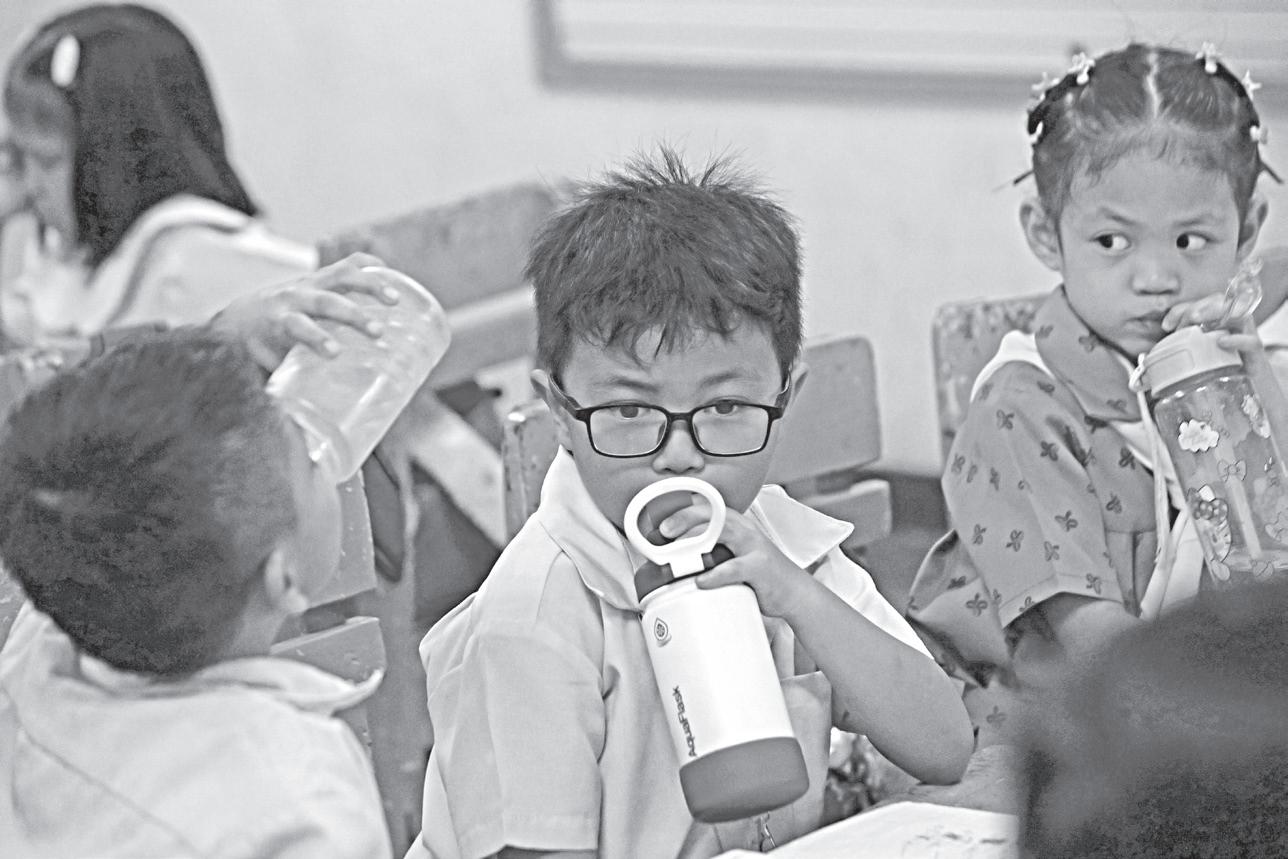

THE Department of Education (DepEd) is taking a quantum leap in modernizing its operations by deploying 1 million “Google Workspace for Education Plus” accounts for its educators and staff.
The initiative, according to Google Phils., will enhance efficiency, collaboration and communication across the department, ultimately benefiting the nation’s public-school students. This strategic move provides DepEd teachers and personnel access to Google Workspace for Education Plus: a robust suite of cloudbased tools designed to streamline workflows and foster seamless collaboration.
The online tool enhances and enriches the capacity of online learning for Filipino students. It powers digital worksheets for subjects such as Math and English, stimulates original thinking with improved originality reports that detect plagiarism across billions of web pages, and more than 40 million books.
ON February 4, First Secretary Yuki Suzuki of the Embassy of Japan attended the official handover of “The Project for Construction of School Building for Ilog Elementary School in [the] Municipality of Ilog, Negros Occidental.”
The embassy provided a grant of $247,228 (approximately P14 million) to the municipal government of Ilog. It funded the construction of a two-story, sixclassroom building that meet the Department of Education’s standards. According to the deputation, the new building will provide a safe learning environment for students and will also serve as a temporary evacuation center, offering shelter to approximately 200 individuals from 40 nearby households.
In his message, Suzuki highlighted that this new building would provide a safe and supportive space for the students. He also expressed his hope that these new classrooms will not only enhance the students’ education experience, but “will also serve as a gateway to a brighter future.”
Teachers can also conduct classes from anywhere with Google Meet, while having the flexibility to adjust their teaching with real-time visibility and analysis of classes and students’ performance. The Google Workspace for Education Plus solution includes core communication and productivity tools such as Gmail, Classroom, Meet, Calendar, Docs, Sheets, Slides, Forms, and Assignments. In addition, it offers increased Drive capacity for efficient file management, and access to Google’s AI-powered assistant Gemini for innovative learning experiences. Google Workspace for Education Plus also includes advanced security features to protect teachers and students from digital threats.
This deployment marks a key upgrade from DepEd’s previous
MEGAWIDE Corporate Foundation Inc. (MCFI) has partnered with the De La Salle-College of Saint Benilde to empower Filipino families and communities, while building a robust workforce by investing in education.
As the corporate social responsibility arm of Megawide Construction Corp., MCFI aims to support its college scholars by championing a culture of academic excellence that will hone the next generation of industry leaders.
Three of the Megawide Scholarship Program (MSP) beneficiaries hailed from “Benilde.” Architecture freshman Hannah Nicole Penaso believes the benefits of the opportunity given to her reach beyond the monetary side and hopes that her story will inspire others to follow their aspirations.
“[It’s a big help not just in the financial aspect, but also in my personal development, because] being in this community, I know that I’ll definitely grow a lot,” Penaso stated.
For second-year Architecture major Althea Loraine Raquenio, the grant was an answered prayer that will enable her to pursue her childhood dream to design houses, and also build sustainable and functional homes.
“This scholarship means a lot to me because I can focus on my studies without thinking about the finances,” Raquenio shared. “I know this is a very big step in achieving my dream of becoming an architect someday.”
Real Estate Management sophomore Charibene Betita Repil revealed that her acceptance to the program came as a pleasant surprise. She then cited her vision to give back by

use of “Google Workspace for Education Fundamentals” since 2012, which offered a foundational set of education and learning tools. This transition underscores the department’s commitment to equipping its educators with modern technology to excel.
For Sec. Juan Edgardo “Sonny” Angara, empowering educators involves fostering a culture of innovation and providing the right tools: “By equipping our teachers and staff with advanced digital capabilities, we’re laying the groundwork for critical thinking, collaboration, efficiency and creativity in our schools. We [sincerely thank] Google for taking us to the forefront of educational innovation.”

Google for Education head of Asia Pacific + Europe, Middle East and Africa Colin Marson sees education as the cornerstone of individual potential, economic growth, and a more equitable society: “Google is committed to scaling Google Workspace for Education in classrooms, empowering educators with userfriendly and secure tools that help students reach their full capabilities. We’re honored to collaborate with the [DepEd], supporting their mission of educational innovation.”
Innove Communications Inc. under Globe Telecom also plays a key role in the partnership as a reseller in the Philippines. Visit https:// edu.google.com/ to learn more about Google Workspace for Education.

helping people through charities in the future.
“I wasn’t able to go to the in-person interview that day, so [I wasn’t expecting to be chosen]. But…the Megawide team was considerate and kind enough to give me another chance,” Repil said. “They even arranged an online interview for me. And right now, I’m a part of their family.”
Megawide and Benilde’s joint effort was formalized by the signing of a memorandum of agreement between MCFI president Teresa Saavedra and Chancellor Benhur Ong of Benilde.
Eligible applicants for the MSP need to maintain a minimum gradepoint average or GPA of 85 percent or its equivalent based on the school’s grading system. Aside from keeping an outstanding academic record, they should also possess positive values and commitment to service. Those who have displayed leadership skills and community involvement were likewise given preference.
MCFI has also partnered with other local educational institutions such as Ateneo de Manila University, De La

PHILIPPINE Business for Education (PBEd) has called for the immediate convening of the Cabinet cluster on education to synchronize policies and tackle the persistent challenges in the country’s education system.
In August last year, Pres. Ferdinand Marcos Jr. approved the formation of the Cabinet cluster to provide stronger oversight and ensure better collaboration among education agencies. PBEd stressed the urgent need for the cluster to take action, as learners continue to struggle in a fragmented system that fails to prepare them for work.
“Education agencies must be on the same page to foster a seamless transition—from school to work—for our students,” insisted PBEd executive director Justine Raagas. “Without coordination, we leave learners stranded in a maze of missed opportunities [which block] their path to success.”
Raagas added that PBEd is looking forward to the creation of a coordination mechanism for education: “Addressing the learning crisis is an urgent priority that should not be sidelined by other national events such as elections or impeachment.”
In its Year 2 report, the Second Congressional Commission on Education or EDCOM 2 underscored that the lack of synergy among the Department of Education (DepEd), Commis -

Salle University, Polytechnic University of the Philippines, Technological University of the Philippines, and the University of the Philippines. Thirtyfive recipients are now pursuing degrees in Accountancy, Management Engineering, Architecture, Landscape Architecture, Civil Engineering, Electrical Engineering, Geodetic Engineering, Mechanical Engineering, and Real Estate Management.
The recent batch of Megawide scholars for School Year 2024-2025 were officially welcomed through a symbolic jacket-handing ceremony attended by deans, institution executives, registered social workers and families of the students. Dean Joana Diñoso of the School of Management and Information Technology with Dean Ar. Harvey Vasquez of the School of Environment and Design represented Benilde.
MCFI has aided more than a hundred students since 2015 with its academic support program which involves life skills, leadership, and psychosocial workshops, as well as mentorships.
DURING the nation’s commemoration of Public Library Day on March 9, the National Library of the Philippines (NLP), in collaboration with public libraries across the country, led the donation of books to the Iligan City Jail-Male Dormitory (ICJMD).
The handover was of key significance as it highlighted the transformative impact of its linkage with the Iligan City Library, boosting the facility’s commitment to education and rehabilitation under its “Read Your Way Out” (RYWO) project.
sion on Higher Education (CHED) along with the Technical Education and Skills Development Authority (TESDA) has led to misaligned policies and disconnected targets. This lack of coordination weakens the country’s ability to equip students with the skills required for gainful employment.
Marcos Jr. recently expressed support for the development of the “National Education and Workforce Development Plan [NatPlan]:” a comprehensive roadmap to bridge the gap between education and industry. Set to be presented to the Chief Executive in May 2025, the NatPlan will assess workforce development needs in priority sectors and serve as a blueprint for aligning educational programs with labor market demands. By unifying efforts across DepEd, CHED, TESDA as well as the Department of Science and Technology, NatPlan will drive strategic investments in education, training and research ensuring Filipino students are educated and truly job-ready. “Through clear plans and greater coordination, we can bridge the gap between education and employment,” Raagas explained. “This will make sure that students are trained for jobs that are in demand and—equally important—help industries gain access to a skilled and capable workforce.”
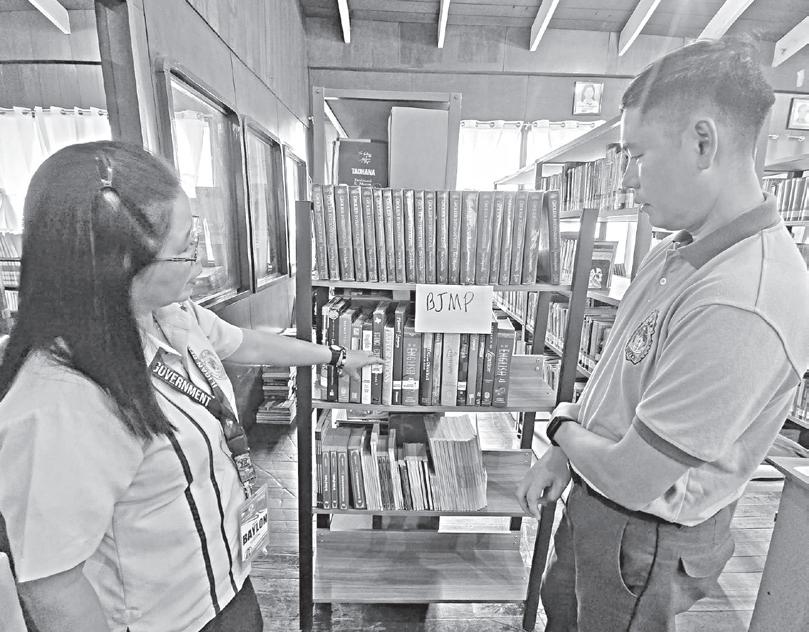
This initiative, launched in partnership with the United Nations Office on Drugs and Crime and the NLP, aims to promote personal development among persons deprived of liberty (PDLs) through accessible learning opportunities.
According to the NLP, the RYWO project has “revolutionized the jail’s approach to rehabilitation.” With the establishment of “Reading Corners” in all 35 dormitories, PDLs now have access to educational materials at any given time. The corners complement the main jail library and address space limitations, ensuring a wider reach for the program.
For the NLP, the impact has been remarkable: From May to December 2024, 487 PDLs earned credits on “Time Allowance for Studying,
Teaching and Mentoring” (TASTM) specifically through library activities. It represented a 771-percent average monthly increase compared to earlier figures. These provisions, along with “Good Conduct Time Allowance,” provide meaningful incentives for PDLs to engage in productive and rehabilitative activities. In January 2025 alone, the number of PDLs who earned TASTM credits rose to 239: an 82-percent leap from December 2024 which highlighted the project’s growing success. Jail warden JCINSP Carmelo A. Corsame expressed his gratitude to the Iligan City Library for their unwavering support: “This donation strengthens our mission [of promoting] education and rehabilitation among PDLs. Books represent hope, knowledge and a path to a brighter future.” Corsame also underscored ICJMD’s book drive to further develop its library resources.
Tourism Editor: Edwin P. Sallan
Story & photos by Marky Ramone Go
Visiting a museum is another way of learning more about a place, which is why i look forward to stepping into one every time i travel to a new destination.
Having been into the biggest museums in the country, such as the National Gallery, the National Museum of Natural History, and other NHCP museums, I taper my expectations when I stumble upon smaller ones.
Upon our visit to the Bangsamoro Museum in Cotabato City, I found myself with modest expectations regarding what lay ahead. To my astonishment, just moments after stepping inside, I was welcomed by a rich array of artifacts that spoke volumes of the BARMM region’s remarkable history.
The first section of the Bangsamoro Museum where the guide ushered us was the gallery, which displayed a collection of burial jars. I was immediately intrigued by the sight of these jars, which date back centuries, because they seemed eerily similar to burial jars I had seen in the Cairo Museum a few years prior.
Burial Jars made of Limestone T H e limestone jars, which number twenty-one in all, are called “secondary burial jars”. Typically, the bodies placed within these jars were allowed to decompose until only bones remained, before being carefully transferred into the stone vessels.
The jars were first uncovered in the early 1960s by researchers from the University of San Carlos (USC), who conducted excavations in the Kulamana Plateau and in Palimbang, Sultan Kudarat. Their discovery prompted an influx of international experts, eager to analyze the artifacts. Through car -
bon dating, they determined the jars to be approximately 2,000 to 2,500 years old, a testament to the region’s rich and complex history.
The excavation continued into the early 1970s, with researchers uncovering further artifacts and gaining deeper insights into the burial customs of the era. However, the work was abruptly halted following the declaration of martial law by then-President Ferdinand Marcos, which saw military action against the Moro National Liberation Front (MNLF) in the region, including bombings that disrupted ongoing archaeological efforts.
The older burial jars came in quadrilateral shapes with cylindrical lids. The bodies of the jars are decorated with different geometric designs, and the lids are adorned with depictions of human features that hint at the gender of the deceased—often phallic for males and mammary for females.
“I believe there would have been more of these if it weren’t for treasure hunters who discovered the other burial jars before they were unearthed by scholars,” our guide told us.
The abundance and age of the jars, which span over two millennia, provide compelling evidence of a vibrant and dynamic culture in the Philippines well before the arrival of the Spaniards in the early 16th century. So, even if you thought that you have delved deep into our nation’s past, know that there is still a great deal of narrative to discover.
A Showcase of Bangsamoro’s Cul -

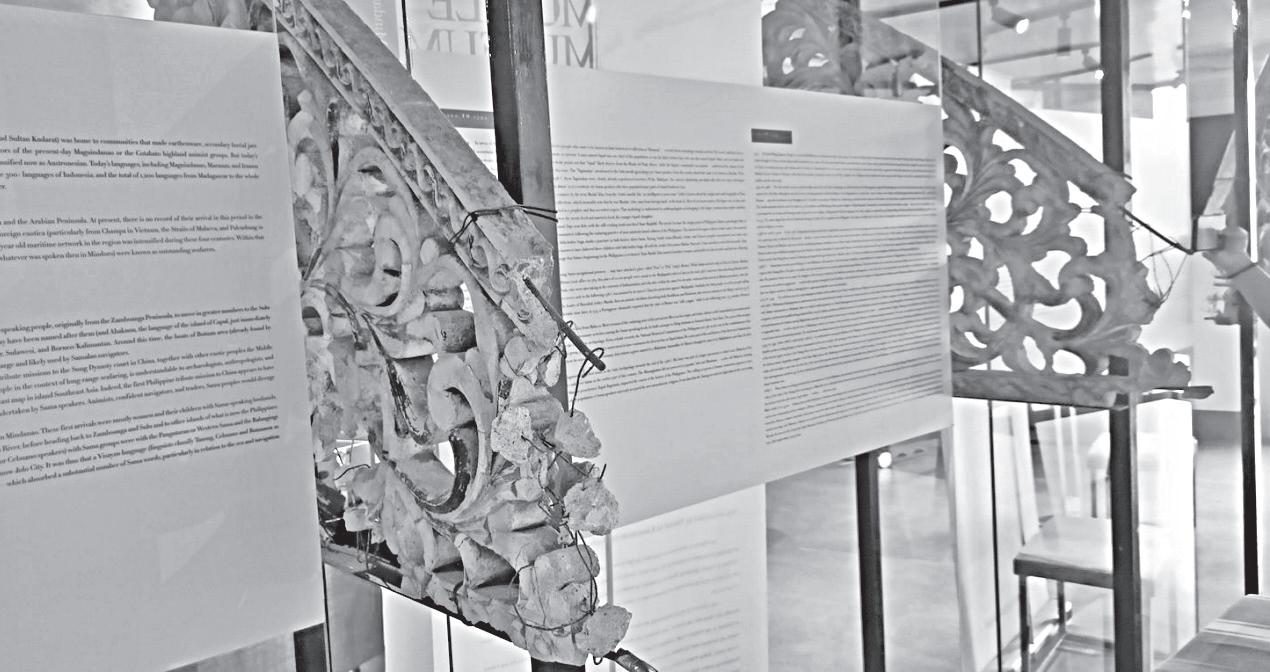
ture, History and People Housed within the Bangsamoro Government Center in Cotabato City, the Bangsamoro Museum stands as a beacon of the region’s deep cultural roots and complex history. e stablished in 2019 under the leadership of Mujiv Hataman, the final governor of the Autonomous Region in Muslim Mindanao (ARMM) before the creation of the Bangsamoro Autonomous Region in Muslim Mindanao (BARMM), the museum is managed by the Bangsamoro Commission for the Preservation of Cultural Heritage (BCPCH). Its curated collection offers a profound journey through the artworks, historical documents, and cultural artifacts of a people whose stories have long been overlooked. Among the museum’s most compelling features is a stunning chronicle of

I


n just a few weeks, the summer travel season will be well underway. Millions of Filipinos will be heading to their summer getaway is whether it’s to the beach or cooler climes.
Instead of sharing stories of my recent travels, I’m writing about wherever the destination and whatever adventures and experiences await, one thing will remain constant—Murphy’s Law.
We’ve all heard the slang. n amed after American aerospace engineer Joseph Murphy, the adage simply means that if there’s a possibility of something going wrong, it will. But let’s not get negative here. Murphy’s Law reminds us to be more careful to minimize the risk of things going wrong. Applied to travelling, Murphy’s Law has a high probability of occurrence. That is the first thing to bear in mind. While travel plans won’t turn out as you dreamed or expected, you can try as best as possible to prepare and plan for contingencies and still enjoy your trip.
I’ve listed some of the more common scenarios with the most propensity of going wrong and how to mitigate them.
Check-in troubles
I T could be excess baggage, packing restricted or dangerous items, the name of the booked passenger mismatched with the name in the passport, mismatched passport details or, in the case of Philippine passport holders, unpaid travel tax. Before confirming
travel bookings, read and re-read all the information. I totally understand that there’s a time limit to stay in many online travel sites, especially when there are sales, but this is a must-do to avoid unnecessary complications. Many seat sale hunters swear that saving the complete names and travel document information in a separate document, then copy-pasting upon booking. Stricter baggage rules make it even more important to check every item packed and weigh your check-in and hand-carry baggage—even your handbag BEFORE YOU LEAVE. You can pre-pay for additional baggage or adjust what you’re bringing. Avoid cram-packing as this increases the chances of baggage blunders. Some airlines allow for online payment of Philippine travel tax with a minimal fee. Alternatively, you can simply be at the airport at least THREE HOURS before your international flight so you have time to pay for travel tax and resolve other issues. For domestic flights, if you have check-in baggage, it’s best to give an allowance of at least 1.5 hours before departure time.
Allotting ample time for pre-departure processes is something you must do no matter where you travel, whether by air, land or sea. And I cannot stress enough the importance of checking in online and filling-up travel declarations and other forms ahead of time.
Missing your connecting flight A IRPORT congestion has
Philippine airports. Even if you’re not
flying out of Manila, delays caused by several factors can affect flights in other airports.
It’s usually a good idea to allow at least a gap of AT LEAST FOUR OR FIVE HOURS before your next flight. This is critical especially if you’re flying on a different airline. The lead time is sufficient to disembark, clear immigration, retrieve your baggage, transit to another terminal then check in for the next flight. You might need more time depending on the volume of passengers at the airport and flight times.
Allocating lead time also applies to travel by land or sea.
Your baggage gets misplaced or delayed
T HERE are many reasons why checked baggage gets lost or delayed, but it is a highly stressful situation. If your luggage never appears at the baggage claim area, breathe and make your way to the airport or airline staff. There are instances when bags are unloaded from the carousel and placed elsewhere. n ever pack anything perishable and make sure liquids and other fragile items are packed securely.
Take photos of all your baggage and “mark” your bags so you can easily identify these (and warn others it’s not their bag) with a ribbon, stickers or bag tags. Most importantly, hand-carry valuables and fragile items. If you are bringing sensitive equipment like cameras, make sure to pack these in proper carrying cases and coordinate with the airline staff for proper handling.
You get sick W HETHER it’s food poisoning or allergies, getting sick while on a trip is a possibility. But it can be avoided. Do not drink water or any other beverage from just any place— and this includes ice. Stick to bottled water or filtered water sourced from reputable establishments, or purchase sealed beverages. Before a trip, I usually “condition” my
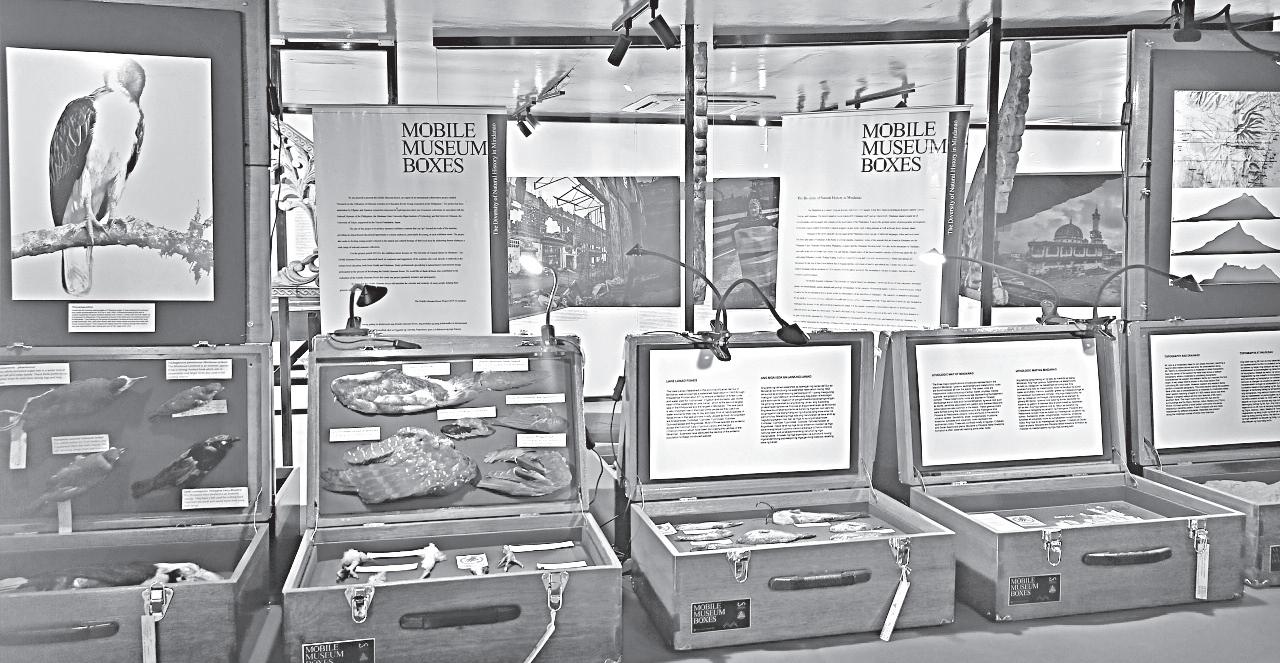
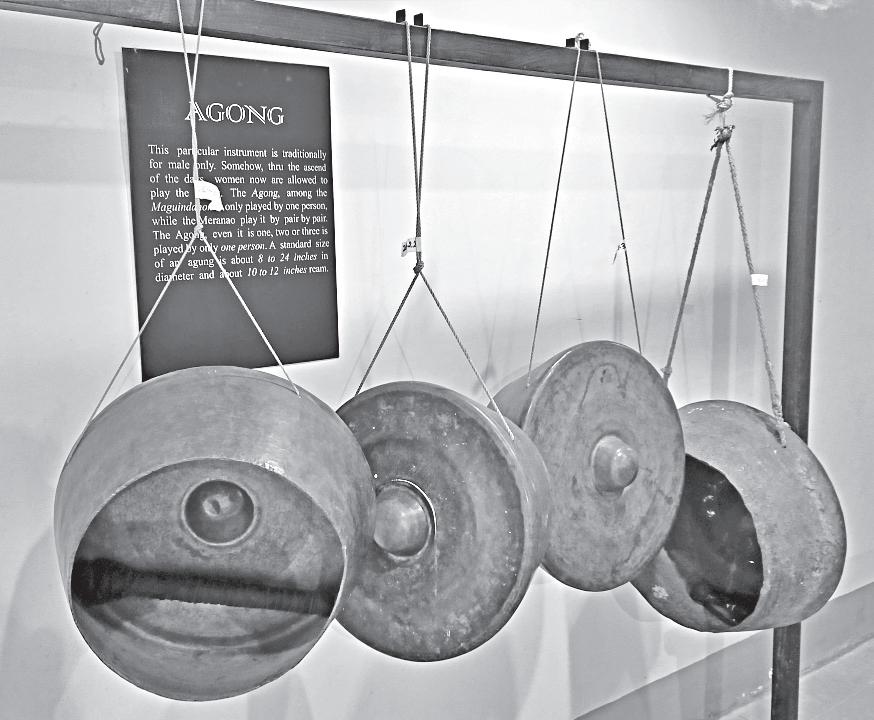
Islam’s millennium-long presence in the Philippines. A timeline—painted in a lengthy, detailed narrative on one of the museum’s walls—unfolds the history of the Bangsamoro people. It traces not only the birth of Islam in the archipelago but also the dark chapters of modern history. One section, particularly poignant, sheds light on the atrocities suffered by the Muslim population during the Martial Law years. The museum does not shy away from the past’s painful moments, instead offering a candid recounting that honors the victims and the resilience that followed.
In addition to this historical narrative, the museum’s collection includes harrowing remnants from the Marawi siege. Among the artifacts are textiles woven by the Sinagtala weavers during the conflict and relics from the
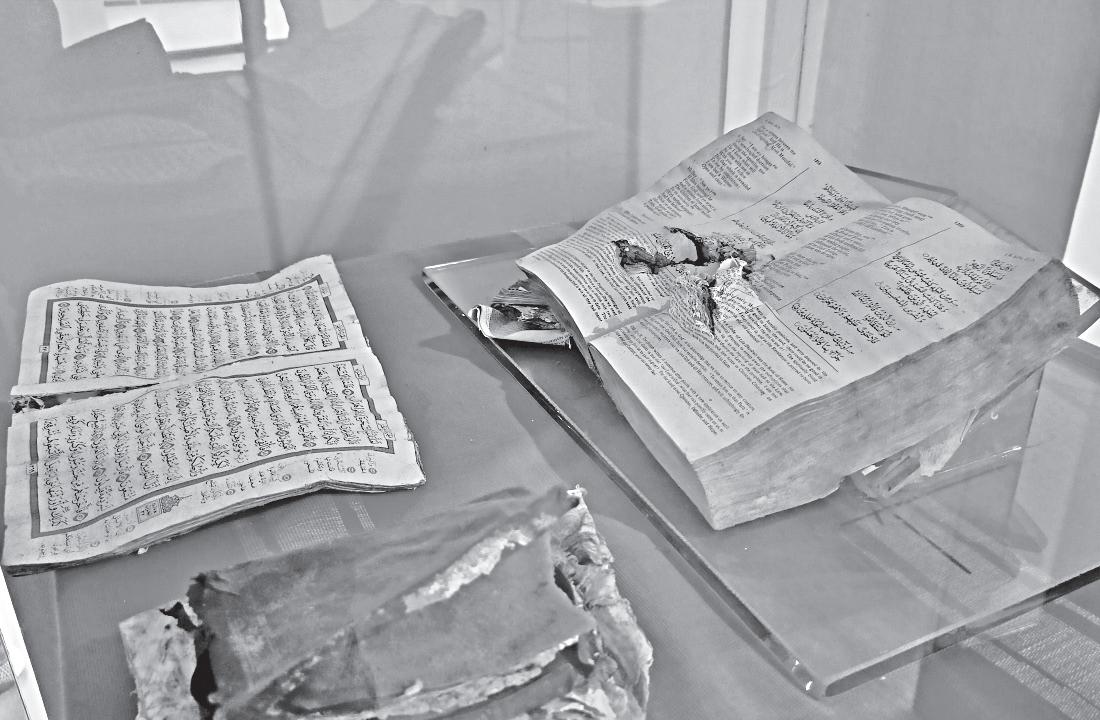
battlegrounds of Ground Zero. These items are accompanied by crucial documents on the Peace Process and the Bangsamoro Organic Law, both cornerstones in the ongoing journey toward autonomy. An audio recording of the Tausug Kissa chant—an evocative prayer for those who perished in the 1906 Bud Dajo massacre—captures the grief and spiritual fortitude of a community in mourning.
Yet, the museum’s offerings extend beyond tales of survival and conflicts. Traditional clothing, musical instruments, and other artifacts offer a glimpse into the everyday lives and vibrant cultural practices of the Bangsamoro people. And, perhaps most poignantly, a collection belonging to Hashim Salamat, the founder of the Moro Islamic Liberation Front, reminds visitors of the


enduring struggle for peace and selfdetermination in the region.
Quoted by various news organizations, Marian Pastor Roces, the commissioned curator of the museum, said that the museum’s “ambition is to affirm the experience of Muslim Filipinos at besting the odds—to hold a mirror to the Maranao, Maguindanao, Yakan, Tausug, Sama and other Islamicized peoples.”
As we end our tour of the Bangsamoro Museum, my tapered expectations were replaced by a feeling of euphoria akin to someone who discovered something significant. Mine didn’t came in material treasure but through a new set of knowledge and a better understanding of the history of the Bangsamoro people. I couldn’t be happier about the new things I learned that day.

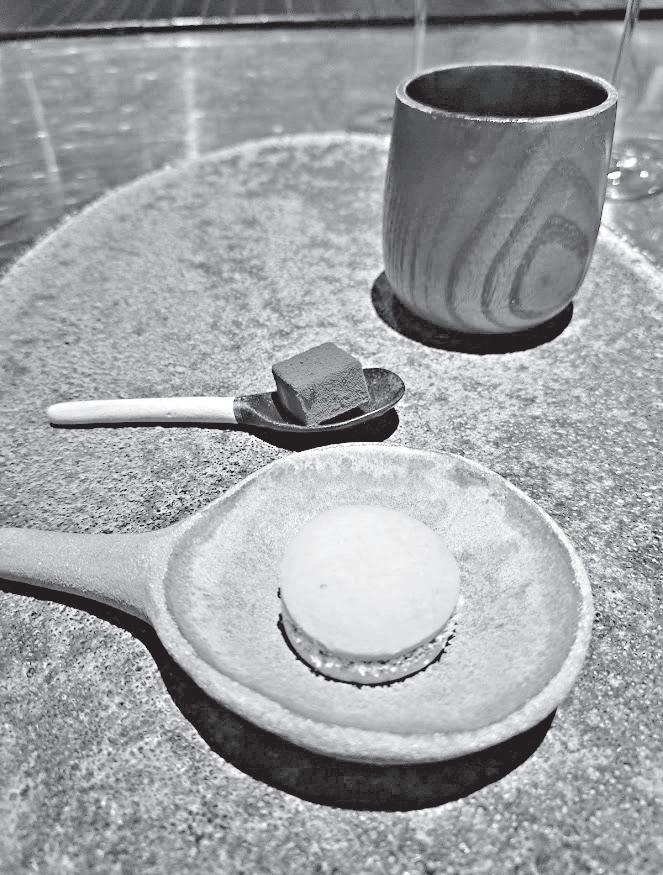
your home country does not have an embassy or consulate. Always keep your passport secure. If you need to carry it with you at all times, consider getting a lightweight waist pouch or a waterproof sleeve. Always keep a soft copy of your most updated passport—including cover page and visas at all times—it’s
By The Associated Press
RUSSIAN President Vladimir Putin said Thursday that he agrees in principle with a US proposal for a 30-day ceasefire in Ukraine, but he emphasized that the terms are yet to be worked out and added that any truce should pave the way to lasting peace.
“The idea itself is correct, and we certainly support it,” Putin told a news conference in Moscow. “But there are issues that we need to discuss, and I think that we need to talk about it with our American colleagues and partners and, perhaps, have a call with President Trump and discuss it with him.”
President Donald Trump said there have been “good signals” coming out of Russia and offered guarded optimism about Putin’s statement. He reiterated that he’s ready to speak with Putin and underscored that it was time to end the war.
Putin “put out a very promising statement, but it wasn’t complete,” Trump said Thursday at a start of a meeting at the White House with NATO Secretary General Mark Rutte. “Now we’re going to see whether or not Russia’s there. And if they’re not, it’ll be a very disappointing moment for the world.”
Ukrainian President Volodymyr Zelenskyy said Putin is “essentially preparing to reject” the ceasefire.
Putin “is afraid to tell President
Trump directly that he wants to continue this war, that he wants to kill Ukrainians,” Zelenskyy said in his nightly address to the nation. “That is why, in Moscow, they are surrounding the idea of a ceasefire with such preconditions that nothing will come of it — or at least, it will be delayed as long as possible.”
The Russian president, he added, “often acts this way. He doesn’t say ‘no’ outright but ensures that everything drags on and that normal solutions become impossible.”
Putin, who launched the fullscale invasion of Ukraine more than three years ago, noted the need to control possible breaches of the truce and signaled that Russia would seek guarantees that Ukraine would not use the break in hostilities to rearm and continue mobilization.
“We agree with the proposals to halt the fighting, but we proceed from the assumption that the ceasefire should lead to lasting peace and remove the root causes of the crisis,” Putin said.
The Russian leader made the re -
marks just hours after the arrival of Trump’s special envoy, Steve Witkoff, in Moscow for talks on the ceasefire, which Ukraine has accepted. A Kremlin adviser said Putin planned to meet with Witkoff later Thursday.
The diplomatic effort coincided with a Russian claim that its troops have driven the Ukrainian army out of a key town in Russia’s Kursk border region, where Moscow has been trying for seven months to dislodge Ukrainian troops from their foothold.
Russia questions details of truce offer PUTIN said it appeared that the US persuaded Ukraine to accept a ceasefire and that Ukraine is interested because of the battlefield situation, particularly in Kursk. Referring to the Ukrainian troops in Kursk, he questioned what will happen to them if the ceasefire takes hold: “Will all those who are there come out without a fight? Or will the Ukrainian leadership order them to lay down arms and surrender?”
Putin thanked Trump “for paying so much attention to the settlement in Ukraine.”
He also thanked the leaders of China, India, Brazil and South Africa for their “noble mission to end the fighting,” a statement that suggested those countries could be involved in a ceasefire deal. Russia has said it will not accept peacekeepers from any NATO members to monitor a prospective truce.
Putin’s seemingly friendly tone toward the White House reflected the astonishing shift in US relations with Russia and Ukraine since Trump returned to office in January.
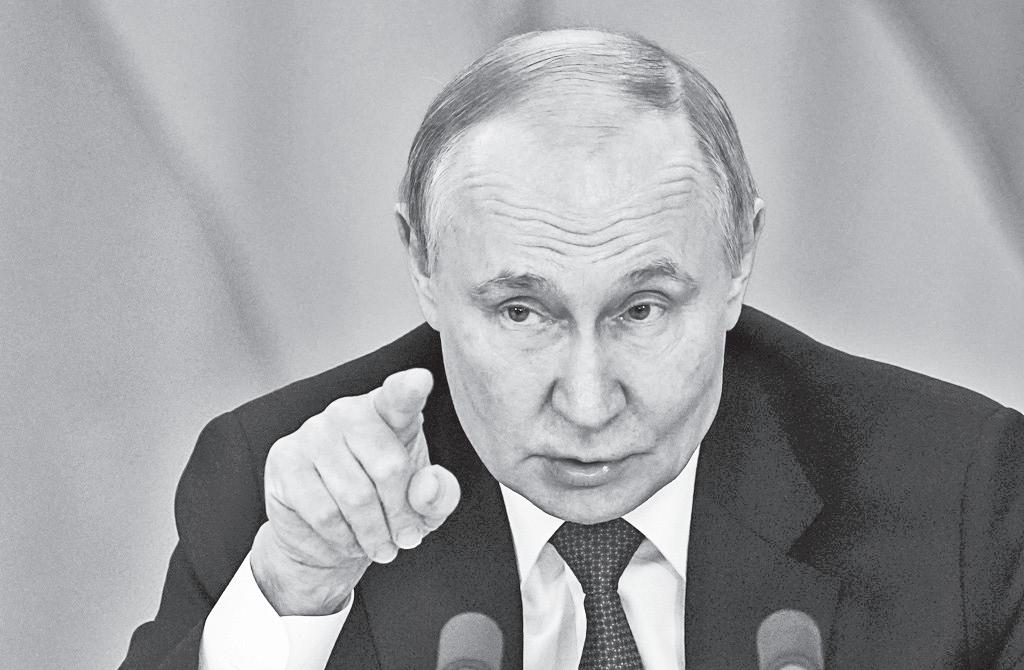
Under the administration of former President Joe Biden, the United States was Ukraine’s staunchest and most powerful ally and a force for isolating the Kremlin. But Trump’s election threw that policy into reverse.
Trump briefly cut off critical military aid and intelligence sharing in an apparent effort to push Kyiv to enter talks to end the war, and Zelenskyy had a testy meeting at the White House on Feb. 28 in which Trump questioned whether Ukraine wanted to halt the war.
The Trump administration has also repeatedly embraced Kremlin positions on the conflict, including indicating that Ukraine’s hopes of joining NATO are unlikely to be realized and that it probably will not get back the land that Russia’s army occupies, which amounts to nearly 20% of the country.
The Russian Defense Ministry’s claim that it recaptured the town of Sudzha, a Ukrainian operations hub in Kursk, came hours after Pu -
tin visited his commanders in the Kursk region. The claim could not be independently verified. Ukrainian officials made no immediate comment.
Administration repeats threat of new sanctions
As Trump seeks a diplomatic end to the war, he has made veiled threats to hit Russia with new sanctions if it does not engage with peace efforts.
US Treasury Secretary Scott Bessent told CNBC Thursday that Trump is “willing to apply maximum pressure on both sides,” including sanctions that reach the highest scale on Russia.
The US still has about $3.85 billion in congressionally authorized funding for future arms shipments to Ukraine, but the Trump administration has shown no interest so far in using that authority to send additional weapons as it awaits the outcome of peace overtures.
By signaling its openness to a
ceasefire at a time when the Russian military has the upper hand in the war, Ukraine has presented the Kremlin with a dilemma — whether to accept a truce and abandon hopes of making new gains, or reject the offer and risk derailing a cautious rapprochement with Washington.
The Ukrainian army’s foothold inside Russia has been under intense pressure for months from the renewed effort by Russian forces, backed by North Korean troops. Ukraine’s daring incursion last August led to the first occupation of Russian soil by foreign troops since World War II and embarrassed the Kremlin. Ukraine launched the raid in a bid to counter the unceasingly grim news from the front line, as well as to draw Russian troops away from the battlefield inside Ukraine and to gain a bargaining chip in any peace talks. But the incursion did not significantly change the dynamic of the war.
The Institute for the Study of War, a Washington-based think tank, assessed late Wednesday that Russian forces were in control of Sudzha, a town close to the border that previously was home to about 5,000 people.
Ukraine’s top military commander, Gen. Oleksandr Syrskyi, said Russian aircraft conducted so many strikes on Kursk that Sudzha had been almost completely destroyed. He did not comment on whether Ukraine still controlled the settlement but said his country was “maneuvering (troops) to more advantageous lines.”
The Associated Press Writer Aamer Madhani in Washington contributed to this report.
By Josef Federman, Matthew Lee
& Samy Magdy
The Associated Press
J
Officials from Sudan said they have rejected overtures from the US, while officials from Somalia and Somaliland told The Associated Press that they were not aware of any contacts.
Under Trump’s plan, Gaza’s more than 2 million people would be permanently sent elsewhere. He has proposed the US would take
ERUSALEM—The US and Israel have reached out to officials of three East African governments to discuss using their territories as potential destinations for resettling Palestinians uprooted from the Gaza Strip under President Donald Trump’s proposed postwar plan, American and Israeli officials say. The contacts with Sudan, Somalia and the breakaway region of Somalia known as Somaliland reflect the determination by the US and Israel to press ahead with a plan that has been widely condemned and raised serious legal and moral issues. Because all three places are poor, and in some cases wracked by violence, the proposal also casts doubt on Trump’s stated goal of resettling Gaza’s Palestinians in a “beautiful area.”

ownership of the territory, oversee a lengthy cleanup process and develop it as a real estate project.
The idea of a mass transfer of Palestinians was once considered a fantasy of Israel’s ultranationalist fringe. But since Trump presented the idea at a White House meeting last month, Israeli Prime Minister Benjamin Netanyahu has hailed it as a “ bold vision.”
Palestinians in Gaza have rejected the proposal and dismiss Israeli claims that the departures would be voluntary. Arab nations have expressed vehement opposition and offered an alternative reconstruction plan that would leave the Palestinians in place. Rights
groups have said forcing or pressuring the Palestinians to leave could be a potential war crime.
Still, the White House says Trump “stands by his vision.”
Speaking on condition of anonymity to discuss a secret diplomatic initiative, US and Israeli officials confirmed the contacts with Somalia and Somaliland, while the Americans confirmed Sudan as well. They said it was unclear how much progress the efforts made or at what level the discussions took place.
Separate outreach from the US and Israel to the three potential destinations began last month, days after Trump floated the Gaza
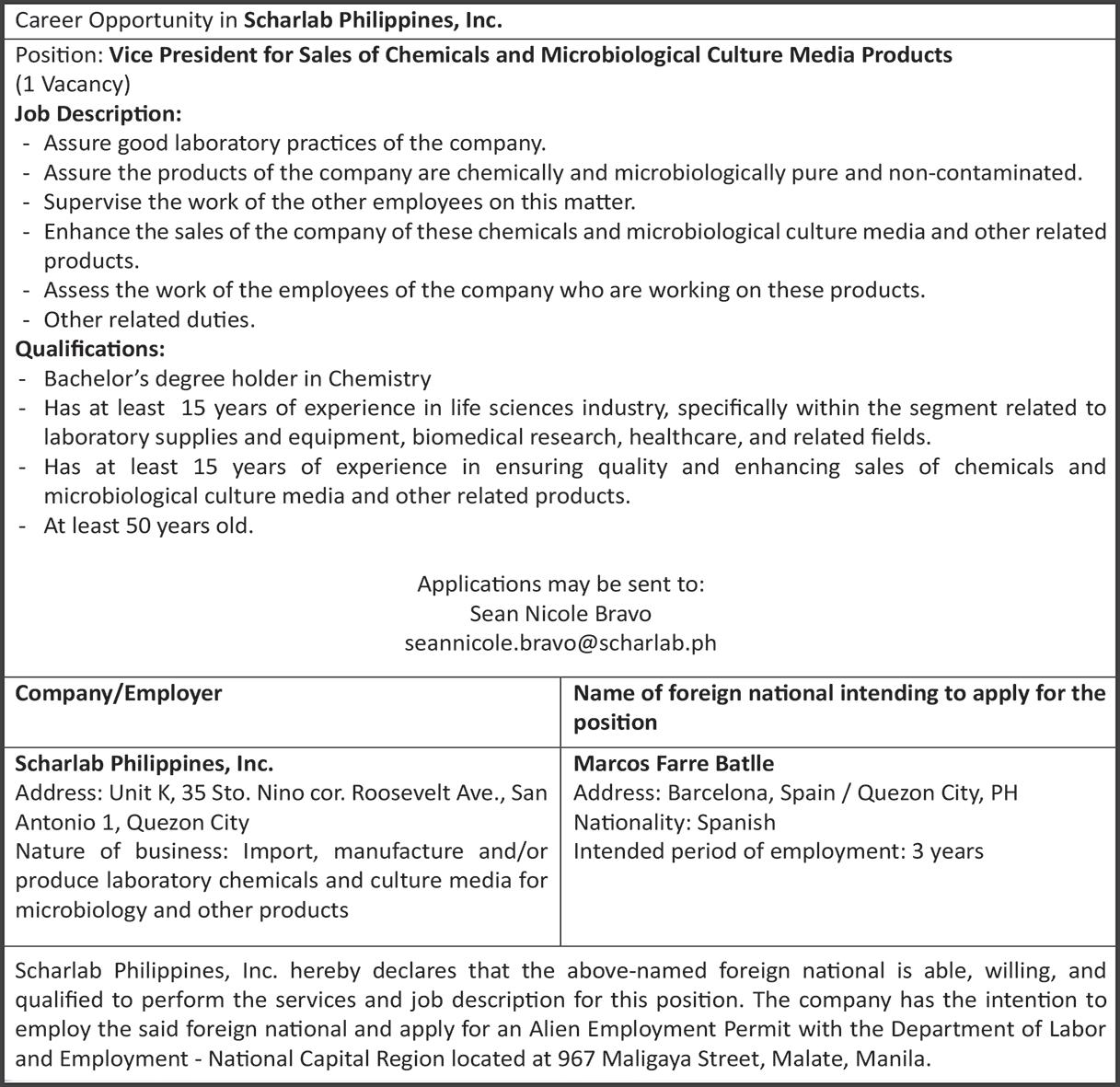
plan alongside Netanyahu, according to the US officials, who said that Israel was taking the lead in the discussions.
Israel and the US have a variety of incentives—financial, diplomatic and security—to offer these potential partners. It is a formula that Trump used five years ago when he brokered the Abraham Accords—a series of mutually beneficial diplomatic accords between Israel and four Arab countries.
The White House declined to comment on the outreach efforts.
The offices of Netanyahu and Ron Dermer, the Israeli Cabinet minister and Netanyahu confidant who has been leading Israel’s postwar planning, also had no comment.
But Finance Minister Bezalel Smotrich, a longtime advocate of what he calls “voluntary” emigration of Palestinians, said this week that Israel is working to identify countries to take in Palestinians.
He also said Israel is preparing a “very large emigration department” within its Defense Ministry. Here is a closer look at the places the officials say have been approached.
Sudan
THE North African country was among the four Abraham Accord nations that agreed to normalize diplomatic relations with Israel in 2020.
As part of the deal, the US removed Sudan from its list of state supporters of terrorism, a move that gave the country access to international loans and global
legitimacy. But relations with Israel never took off as Sudan plunged into civil war between government forces and the RSF paramilitary group.
The conflict has been marked by atrocities, including ethnically motivated killing and rape, according to the UN and rights groups. The International Criminal Court is investigating alleged war crimes and crimes against humanity, and then-President Joe Biden’s administration in January said the RSF and its proxies were committing genocide.
The US and Israel would be hard-pressed to persuade Palestinians to leave Gaza, particularly to such a troubled country. But they could offer incentives to the Khartoum government, including debt relief, weapons, technology and diplomatic support.
Two Sudanese officials, speaking on condition of anonymity to discuss a sensitive diplomatic matter, confirmed that the Trump administration has approached the military-led government about accepting Palestinians.
One of them said the contacts began even before Trump’s inauguration with offers of military assistance against the RSF, assistance with postwar reconstruction and other incentives.
Both officials said the Sudanese government rejected the idea. “This suggestion was immediately rebuffed,” said one official. “No one opened this matter again.”
WBy Aamer Madhani & Josh Boak The Associated Press
Donald Trump on Thursday threatened a 200 percent tariff on European wine, Champagne and spirits if the European Union goes forward with a planned tariff on American whiskey.
The European import tax, which was unveiled in response to steel and aluminum tariffs by the US administration, is expected to go into effect April 1, just ahead of separate reciprocal tariffs that Trump plans to place on the EU.
But Trump, in a morning social media post, vowed a new escalation in his trade war if the EU goes forward with the planned 50 percent tax on American whiskey.
“If this Tariff is not removed immediately, the US will shortly place a 200 percent Tariff on all WINES, CHAMPAGNES, & ALCOHOLIC PRODUCTS COMING OUT OF FRANCE AND OTHER E.U.
REPRESENTED COUNTRIES,” Trump wrote. “This will be great for the Wine and Champagne businesses in the US.”
European Commission President Ursula von der Leyen said Thursday that the EU trade commissioner would be having a phone call Friday with his US counterpart.
and aluminum tariffs means that the cost of a 30-euro bottle of bourbon in Paris could increase to 45 euros.
Holly Seidewand, owner of First Fill Spirits, a shop in Saratoga Springs, New York, said before Trump threatened the tariffs on European alcohol, the spirits industry was already reeling from layoff announcements in the Kentucky Bourbon sector and the tariffs planned by the EU on American spirits.
“This ongoing tariff war doesn’t just harm importers—it weakens domestic brands, disrupts distributors, and squeezes retailers who rely on global selections,” she said. “In the end, consumers will bear the brunt of it all.”

are responding with countermeasures worth 26 billion euros,” or about $28 billion.
Those measures cover not just steel and aluminum products but also textiles, home appliances and agricultural goods.
European Commission spokesman Olof Gill said Thursday shortly before Trump’s announcement that the EU was “prepared for whatever might come, and we have been preparing for over a year.”
“We call on the US to immediately revoke the tariffs imposed yesterday, and we want to negotiate to avoid tariffs in the future,” Gill added. “They bring nothing but lose-lose outcomes, and we want to focus on win-win outcomes.”
The US president has defined his opening weeks in the White House with near daily drama regarding tariffs, saying that taxing imports might cause some economic pain but would eventually lead to more domestic manufacturing and greater respect for America. The S&P 500 stock index fell 1.4 percent on Thursday, while European alcohol stocks also tumbled.
But with the EU and Trump now tussling over alcohol tariffs, the impact of a trade war could surface directly in ways consumers could quickly see. It’s unclear how the import taxes would be absorbed among vintners, distillers, brewers, distributors, retailers and consumers.
Because of Trump’s threat, a previously untariffed $15 bottle of Italian Prosecco could possibly increase in price to $45. Similarly, Europe’s response to Trump’s steel
“We don’t like tariffs because we think tariffs are taxes and they are bad for business and they are bad for consumers,” she said. “We have always said at the same time that we will defend our interests. We’ve said it, and we’ve shown it, but at the same time I also want to emphasize that we are open for negotiations.”
Gabriel Picard, who heads the French Federation of Exporters of Wines and Spirits, said 200 percent tariffs would be “a hammer blow” for the sector. He said the US market is worth 4 billion euros ($4.3 billion) annually for French exporters of wines and spirits.
“Not a single bottle will continue to be expedited if 200 percent tariffs are applied to our products. All exports to the United States will come to a total, total, halt,” Picard said in an interview with The Associated Press. “With 200 percent duties, there is no more market.”
As of now, Europe seems unwilling to back down.
“Trump is escalating the trade war he has chosen,” Laurent SaintMartin, the French delegate minister for foreign trade, said on X.
“France, together with the European Commission and our partners, is determined to fight back. We will not give in to threats and
will always protect our industries.”
Trump’s latest tariff threats suggested that even companies that have publicly stood by him could be collateral damage, raising questions about whether the wider business community would be willing to openly challenge a series of trade wars that have hurt the stock market and scared consumers who worry about inflation worsening.
Bernard Arnault, the CEO of French luxury goods company LVMH, attended Trump’s inauguration in January. His company’s wine and spirits brands, which include Moët & Chandon, Krug, Veuve Clicquot and Hennessy, could be subject to the retaliatory tariffs the US president is seeking.
The Italy-based Campari Group could also be hurt, after the White House highlighted it at Tuesday’s press briefing for possibly opening a US factory.
Still, Trump feels aggrieved by the EU, complaining to reporters
on Thursday about the lack of US auto sales there as well as the lawsuits and fines filed against Google and Facebook parent Meta.
“They are suing all of these companies, and they’re taking billions of dollars out of American companies,” Trump said. “And I guess they’re using it to run Europe or something.”
Trump, in announcing the new steel and aluminum tariffs on Wednesday, openly challenged US allies and vowed to take back wealth “stolen” by other countries, and he drew quick retaliation. He has separate tariffs on Canada, Mexico and China, with plans to also tax imports from the European Union, Brazil and South Korea by charging “reciprocal” rates starting on April 2.
The EU announced its own countermeasures. European Commission President Ursula von der Leyen said that as the United States was “applying tariffs worth 28 billion dollars, we
US whiskey makers, meanwhile, encouraged Trump to broker a deal.
“We urge President Trump to secure a spirits agreement with the EU to get us back to zero-forzero tariffs, which will create US jobs and increase manufacturing and exports for the American hospitality sector,” Chris Swonger, president and CEO of the Distilled Spirits Council, said in a statement.
When Europe responded to Trump’s 2018 tariffs with a 25 percent tax on US whiskey, exports to the EU fell by 20 percent through 2021, according to the Distilled Spirits Council. Trump’s separate 25 percent tariffs on Canada and Mexico could put 31,000 jobs at risk in the sector.
AP writers Lorne Cook in Brussels, Samuel Petrequin and John Leicester in Paris, Mae Anderson, Dee-Ann Durbin and Mike Warren contributed reporting.
By Samuel Petrequin & Sylvain Plazy
BThe Associated Press
RUSSELS—Belgian federal prosecutors on Thursday announced the arrests of several people in a corruption probe linked to the European Parliament and the Chinese company Huawei, which is suspected of bribing EU lawmakers.
The arrests came as an investigation by Le Soir newspaper and other media said lobbyists working for the Chinese telecoms giant were suspected of bribing current or former European Parliament members to promote the company’s commercial policies in Europe.
The prosecutor’s office confirmed in a statement that the alleged bribery “is said to have benefited Huawei.”
About 100 federal police officers carried out 21 searches in Brussels, the Flanders and Wallonia regions, and Portugal. The investigating magistrate in charge of the case also asked for seals to be placed on offices inside the EU Parliament allocated to two parliamentary assistants allegedly involved.
Prosecutors said one person was arrested in France.
The suspects would be questioned over “alleged involvement in active corruption within the European Parliament, as well as for forgery and use of forgeries,” prosecutors said. “The offences were allegedly committed by a criminal organization.”
The company said in a state -
ment that “Huawei takes these allegations seriously and will urgently communicate with the investigation to further understand the situation.”
“Huawei has a zero tolerance policy towards corruption or other wrongdoing, and we are committed to complying with all applicable laws and regulations at all times,” it added.
The European Parliament said only that the assembly “takes note of the information” and “always cooperates fully with the judicial authorities.”
Huawei, which makes cellphones and is the biggest maker of networking gear for phone and internet carriers, has been caught in tensions between the United States and China over technology and trade.
Some European nations have followed Washington’s lead and banned Huawei’s equipment from next-generation mobile networks over allegations that it poses a security risk that could help facilitate Chinese spying. The company has repeatedly denied this.
European Commission spokesman Thomas Regnier said the EU’s executive branch had no comment regarding the investigation but underlined the commission’s security concerns about Huawei and Europe’s fifth-generation mobile phone networks.
“The security of our 5G networks is obviously crucial for our economy,” Regnier told reporters. “Huawei represents materially higher risks than other 5G
suppliers.”
EU member states should swiftly “adopt decisions to restrict or to exclude Huawei from their 5G networks,” Regnier said. “A lack of swift action would expose the EU as a whole to a clear risk.”
The prosecutor’s office said it believes there was corruption “from 2021 to the present day” in various forms, “such as remuneration for taking political positions or excessive gifts such as food and travel expenses or regular invita -
tions to football matches.”
Prosecutors also believe payments might have been disguised as business expenses and in some cases may have been directed to third parties. They said they would also look to “detect any evidence of money laundering.”
Police seized several documents and objects during the searches. Staff at Huawei’s offices in Brussels declined to comment and turned the lights

off inside to avoid photographs taken through the window.
This is the second corruption case targeting the EU Parliament in less than three years.
In December 2022, the legislature was shaken by a corruption
scandal in which Qatari officials were accused of bribing EU officials to play down labor rights concerns ahead of the soccer World Cup.
See “Belgian,” A15

By Lorne Cook
The Associated Press
BRUSSELS—In the year after Russia launched outright war on Ukraine, NATO leaders approved a set of military plans designed to repel an invasion of Europe. It was the biggest shake-up of the alliance’s defense readiness preparations since the Cold War.
The secret plans set out how Western allies would defend NATO territory from the Atlantic to the Arctic, through the Baltic region and Central Europe, down to the Mediterranean Sea. Up to 300,000 troops would move to its eastern flank within 30 days, many of them American. That would climb to 800,000 within six months.
But the Trump administration warned last month that US priorities lie elsewhere. Europe must take care of its own security, and those goals now seem questionable. Mustering just 30,000 European troops to police any future peace in Ukraine is proving a challenge.
Billions of euros are being shifted to military budgets, but only slowly, and the Europeans are struggling to fire up production in their defense industries.
Beyond funding, tens of thousands more European citizens might have to complete military
service, and time is of the essence.
NATO Secretary-General Mark Rutte has warned that Russian forces could be capable of launching an attack on European territory in 2030.
Concerned about Russia’s intentions, Polish Prime Minister Donald Tusk wants to introduce large-scale military training for every adult male, and double the size of Poland’s army to around 500,000 soldiers.
“If Ukraine loses the war or if it accepts the terms of peace, armistice or capitulation…then, without a doubt—and we can all agree on that—Poland will find itself in a much more difficult geopolitical situation,” Tusk warned lawmakers last week.
The scale of Europe’s military personnel shortage
The Stockholm International Peace Research Institute estimates that Europe, including the UK, has almost 1.5 million
active-duty personnel. But many can’t be deployed on a battlefield, and those who can are hard to use effectively without a centralized command system.
The number of Russian troops in Ukraine at the end of 2024 was estimated to be around 700,000.
NATO troops are controlled by a US general, using American air transport and logistics.
Analysts say that in the event of a Russian attack, NATO’s top military officer would probably dispatch around 200,000 US troops to Europe to build on the 100,000 US military personnel already based there.
With the Americans out of the picture, “a realistic estimate may therefore be that an increase in European capacities equivalent to the fighting capacity of 300,000 US troops is needed,” the Brussels-based Bruegel think tank estimates.
“Europe faces a choice: either increase troop numbers significantly by more than 300,000 to make up for the fragmented nature of national militaries, or find ways to rapidly enhance military coordination,” Bruegel said.
The question is how.
Making up the numbers
NATO is encouraging countries to build up personnel numbers, but the trans-Atlantic alliance isn’t telling them how to do it. Maintaining public support for the armed forces and for Ukraine is too important to risk by dictating choices.
“The way they go about it is intensely political, so we wouldn’t

prescribe any way of changing this—whether to go for conscription, elective conscription, bigger reserves,” a senior NATO official said on the condition of anonymity because he wasn’t authorized to brief journalists unless he remained unnamed.
“We do stress the point that fighting with those regional plans means that we are in collective defense and likely in an attrition war that requires way more manpower than we currently have, or we designed our force models to deliver,” he added.
Eleven European countries have compulsory military service: Austria, Cyprus, Croatia, Denmark, Estonia, Finland, Greece, Latvia, Lithuania, Sweden, and non-European Union nation Norway. The length of service ranges from as little as two months in Croatia to 19 months in Norway.
Poland isn’t considering a return to universal military service, but rather a reserve system based
on the model in Switzerland, where every man is obliged to serve in the armed forces or an alternative civilian service. Women can volunteer.
Belgium’s new defense minister plans to write a letter in November to around 120,000 citizens who are age 18 to try to persuade at least 500 of them to sign up for voluntary military service. Debate about the issue goes on in the UK and Germany.
Confronting the challenges GERMANY’S professional armed forces had 181,174 active service personnel at the end of last year— slightly lower than in 2023, according to a parliamentary report released Tuesday. That means it’s no closer to reaching a Defense Ministry target of 203,000 by 2031. Last year, 20,290 people started serving in the German military, or Bundeswehr, an 8 percent increase, the report said. But of the 18,810 who joined in 2023, more
By Matthew Lee
The Ap Diplomatic Writer
LA
MALBAIE,
Canada—Top diplomats from the Group of 7 industrialized democracies held a first day of talks in Canada on Thursday as US President Donald Trump’s trade and foreign policies have thrown the bloc’s once solid unity into disarray. Trump then made new comments antagonizing Secretary of State Marco Rubio’s Canadian hosts.
than a quarter—5,100 or 27 percent of the total—left again, most at their own request during the six-month trial period.
The German parliament’s commissioner for the armed forces, Eva Högl, said that army life is a hard sell.
“The biggest problem is boredom,” Högl said. “If young people have nothing to do, if there isn’t enough equipment and there aren’t enough trainers, if the rooms aren’t reasonably clean and orderly, that deters people and it makes the Bundeswehr unattractive.” At the other end of the scale, tiny Luxembourg has unique demographic challenges. Of its roughly 630,000 passport holders, only 315,000 are Luxembourgers. The number of people of military service age—18 to 40—is smaller still.
Around 1,000 people are enlisted. That’s small compared to some European powers, but bigger per capita than the UK armed forces. Recently, Luxembourg—where unemployment is low and salaries are high—has struggled to find just 200-300 military personnel.
Military service comes with many challenges too, not least convincing someone to sign up when they might be sent to the front, and hastily trained conscripts can’t replace a professional army. The draft also costs money. Extra staff, accommodation and trainers are needed throughout a conscript’s term.
Geir Moulson contributed to this report from Berlin.
The two-day meeting opened just after Trump threatened to impose 200% tariffs on European wine and other alcohol if the European Union doesn’t back down from retaliating against US steel and aluminum tariffs with a levy on American whiskey. The escalating trade war added to uncertainty over relations between the US and its closest allies, which have already been strained by Trump’s position on Russia’s war in Ukraine.
complaints as he met with the foreign ministers of Britain, Canada, France, Germany, Italy and Japan.
All of them have been angered by the new American president’s policies, and they smiled stiffly in frigid temperatures as they posed for a group photo at a snowy resort in La Malbaie, Quebec, on the St. Lawrence River.
It also meant that Rubio, on his first official trip to Canada and his first to a G7 event, was likely to hear a litany of

“Peace and stability are at the top of our agenda, and look forward to discussing how we continue to support Ukraine in the face of Russia’s illegal aggression,” Canadian Foreign Minister Mélanie Joly said as she gaveled the meetings into session.
Rubio had met earlier with Joly, arriving in Quebec late Wednesday just hours after Trump’s steel and aluminum tariffs kicked in—prompting irate responses from the European Union and Canada. Neither Rubio nor Joly spoke, and neither the State Department nor the Canadian foreign ministry issued normally customary readouts of the discussion.
In fact, there was little, if any, information to emerge about the closed-door discussions
on Thursday that were punctuated by uncertainty over Joly’s planned departure for Ottawa on Friday before the G7 meeting had been scheduled to close to attend soon-to-be new Canadian Prime Minister Mark Carney’s first Cabinet meeting.
But, en route to Canada from Saudi Arabia, where he had won agreement from Ukraine for a 30-day ceasefire in the war, Rubio had dismissed suggestions that he would face an uncomfortable reception from his counterparts.
Canada signals it won’t back down JOLY however, had made it clear that Canada, at least, would not back down.
Trump has arguably been most antagonistic toward Canada with persistent talk of it becoming the 51st US state, additional tariffs and persistent insults against its leadership, much of which he repeated on Thursday in comments at the White House.
Ahead of the talks, Joly had said she would use every meeting at the G7 to raise Trump’s tariffs and coordinate a response.
She also noted that Trump had continued to press “his disrespectful 51st state rhetoric.”
For his part, Trump doubled down on the anti-Canada rhetoric during an Oval Office meeting on Thursday with NATO chief Mark Rutte. “To be honest with you, Canada only works as a state,” Trump said before going on to say that he’s not going to change his mind on the tariffs he’s imposing on Canada.
“We’ve been ripped off for years,” he said.
“We’re not going to bend.”
Rubio had downplayed Trump’s earlier comments, saying the president was only expressing what he thought would be a good idea. The G7 “is not a meeting about how we’re going to take over Canada,” he said.
German Foreign Minister Annalena Baerbock said G7 nations should avoid panic and posted a message of support for Canada on X, featuring a photo of her and EU foreign policy chief Kaja Kallas. “We’ve got your back, @melaniejoly,” she wrote.
“#Canada #Solidarity”
“WE have learned altogether in these shaky
geopolitical times...especially in moments when your heart is really beating, it’s important to keep calm,” Baerbock told reporters. She noted that the G7 has been “a powerhouse…for freedom, for our common understanding of peace.”
Rubio faces allies as tariffs take hold ON tariffs, Rubio said G7 partners should understand that these are a “policy decision” by Trump to protect American competitiveness.
“I think it is quite possible that we could do these things and at the same time deal in a constructive way with our allies and friends and partners on all the other issues that we work together on,” Rubio had told reporters on Wednesday. “And that’s what expect out of the G7 and Canada.” Asked if he expected a difficult reception from his counterparts, Rubio brushed the question aside: “I don’t know, should I be? I mean, they’ve invited us to come. We intend to go. The alternative is to not go.
See “G7,” A15
By Ryan J. Foley, Joshua Goodman & Christopher L. Keller
Press
The Associated
FEDERAL agencies will begin to vacate hundreds of offices across the country this summer under a frenetic and error-riddled push by Elon Musk’s budgetcutting advisers to terminate leases that they say waste money.
Musk’s Department of Government Efficiency maintains a list of canceled real estate leases on its website, but internal documents obtained by The Associated Press contain a crucial detail: when those cancellations are expected to take effect. The documents from inside the General Services Administration, the US government’s real estate manager, list dozens of federal office and building leases expected to end by June 30, with hundreds
more slated over the coming months.
The rapid pace of cancellations has raised alarms, with some agencies and lawmakers appealing to DOGE to exempt specific buildings. Several agencies are facing 20 or more lease cancellations in all, including the IRS, the Social Security Administration, the US Department of Agriculture and the US Geological Survey.
Many of the terminations would affect agencies that aren’t as well-known but oversee services critical to many Americans. They span from a Boise, Idaho, office of the Bureau of Reclamation—which oversees water supply and deals with disputes across the often-parched American West—to a Joliet, Illinois, outpost of the Railroad Retirement Board, which provides benefits for railroad workers and their survivors.
The lease terminations do not mean all the locations will close. In some cases,
agencies may negotiate new leases to stay in place, downsize their existing space or relocate elsewhere.
“Some agencies are saying: ‘I’m not leaving. We can’t leave,’” said Chad Becker, a former GSA real estate official who now represents building owners with government leases at Arco Real Estate Solutions. “I think there’s going to be a period of pushback, a period of disbelief. And then, if necessary, they may start working on the actual execution of a move.”
Errors add to confusion
DOGE says GSA has notified landlords in recent weeks that it plans to terminate 793 leases, focusing mostly on those that can be ended within months without penalty.
The group estimates those moves will save roughly $500 million over the terms of the leases, which in some cases were slated
to continue into the 2030s. The Bureau of Reclamation cancellation in Boise, for instance, would take effect Aug. 31 and is expected to save a total of $18.7 million through 2035. But DOGE’s savings estimates—a fraction of Musk’s $1 trillion cost-cutting goal—have not been verified and do not take into account the costs of moves and closures. The group has released no information about what they will mean for agencies.
“My initial reaction is this is just going to cause more chaos,” said Jim Simpson, an accountant in Arizona who helps lowincome people file taxes and serves on an IRS panel that advocates for taxpayers. “There’s a lot of room to help with government efficiency, but it should be done surgically and not with a chainsaw.”
See “Elon,” A15
www.businessmirror.com.ph
By Lars Paulsson
OCATED on a blustery pla -
Lteau just south of the Arctic Circle in Sweden, Markbygden Ett became the crown jewel of Europe’s largest onshore wind development when it went online late last decade. Despite a longterm contract assumed to be safe, it became an expensive lesson in the dangers of making deals based on the predictability of energy prices—or the weather itself.
In the years since the 179 turbines started spinning, operator Markbygden Ett AB has racked up hundreds of millions of euros in losses and suffered a heavy reputational blow. That traces back to a critical misstep: signing a 19-year contract known as a power purchase agreement that included unrealistic expectations about how much electricity the farm would produce around the clock. When there wasn’t enough wind, or the turbines were offline, Markbygden Ett had to make up the difference by buying electricity on the spot market, where hourly prices are dynamically determined by availability. Russia’s invasion of Ukraine compounded the problem. That caused power prices to soar, triggering the project’s spiral into financial distress.
The situation that Markbygden Ett found itself in isn’t unique. The operators of at least two other big Swedish wind parks have ended up in similar positions as a result of disastrous power purchase
Continued from A12
Military chief Gen. AbdelFattah Burhan told an Arab leaders’ summit last week in Cairo that his country “categorically rejects” any plan that aims to transfer “the brotherly Palestinians from their land under whatever justification or name.”
Somaliland
SOMALILAND , a territory of over 3 million people in the Horn of Africa, seceded from Somalia
Continued from A14
I think that would actually make things worse, not better.” The agenda for the G7 meeting included discussions on China and the Indo-Pacific; Ukraine and Europe; stability in the Americas; the Middle East; maritime security; Africa; and China, North Korea, Iran and Russia.
Discussing peace in Ukraine
RUBIO and Trump’s national security adviser, Mike Waltz, had been in Jeddah, Saudi Arabia, earlier in the week securing a potentially huge win for the administration—a possible 30-day ceasefire in the Russia-Ukraine war, an issue
Elon. . .
Continued from A14
Simpson said he was surprised to learn that dozens of IRS offices, including local taxpayer assistance centers, were facing upcoming lease cancellations. He refers clients there to get paperwork to file returns and answer IRS inquiries, and he said losing services would “cause a lot of anxiety” and delay refunds. Plans to cancel the leases at several of the IRS centers and other sites were in error and have been rescinded, according to a person with direct knowledge of the changes who spoke to the AP on the condition of anonymity in order to avoid retaliation. Those changes are not yet reflected on DOGE’s list, which only removed one and added dozens more in its latest update published Thursday.
agreements, and solar parks in Chile have been forced to cancel contracts amid energy market upheaval. Other cases in Germany and the Nordic countries haven’t been made public yet, analysts say. As a result, the terms of these multi-year deals are getting more flexible.
Power purchase agreements are supposed to be a win-win. Major industrial consumers like Norwegian aluminum producer Norsk Hydro ASA, which signed the deal with Markbygden Ett, are guaranteed years’ worth of steady power, and wind farm owners in turn can leverage those contracts to secure bank funding and, in theory, avoid the turbulence of the electricity spot market. In the case of Markbygden Ett, analysts and industry sources say that banks required an ambitious PPA to offer funding.
The problem with these arrangements was that, even when the wind didn’t blow, the parks were still contractually obliged to provide energy.
Markbygden at first looked like a safe bet. Plans for the project came into view decades ago when Hans Bergstrom, now a professor emeritus in meteorology at Uppsala University, was hired by a wind developer to find suitable locations. When he discovered the area where Markbygden would later be built, he found that wind speeds on the plateau were up to 40% higher than in the surrounding river valleys.
“It was a surprisingly large
over 30 years ago, but it is not internationally recognized as an independent state. Somalia considers Somaliland part of its territory.
Somaliland’s new president, Abdirahman Mohamed Abdullahi, has made international recognition a priority.
An American official involved in the efforts confirmed that the US was “having a quiet conversation with Somaliland about a range of areas where they can be helpful to the US in exchange for recognition.”
The possibility of US recogni -
that galvanized the G7 since even before the conflict began. Trump’s special envoy Steve Witkoff arrived Thursday in Russia for talks with officials on the proposal.
Russian President Vladimir Putin said Thursday that he agrees in principle with the US proposal but that the terms need to be worked out, emphasizing it should pave the way to lasting peace.
“So, the idea itself is correct, and we certainly support it,” Putin said at a news conference in Moscow. “But there are issues that we need to discuss, and I think that we need to discuss it with our American colleagues and partners.”
There was no immediate comment from G7 officials to Putin’s comments, although participants were expected to be cautiously optimistic.
The GSA walked back the cancellation of a Geological Survey office in Anchorage, Alaska, for instance, after learning it did not have termination rights, according to the person familiar with the matter.
Rep. Tom Cole, R-Okla., said Monday that he’d convinced DOGE to back off lease terminations planned for the National Weather Center in Norman, a Social Security office in Lawton and the Indian Health Services office in Oklahoma City. But all three leases remained on DOGE’s list of cancellations as of Thursday. GSA’s press office didn’t respond to inquiries.
Foley reported from Iowa City, Iowa; Goodman reported from Miami; and Keller reported from Albuquerque, New Mexico. Fatima Hussein in Washington contributed to this report.
area,” he recalled. “If you wanted to build in northern Sweden, without going into the mountain range itself, it was a pretty unique place.”
The project suffered from years of delay due to red tape. In 2017, Macquarie Group Ltd.’s GIG arm and GE Energy Financial Services closed on the Markbygden Ett project for €800 million. It would be the flagship project in the Markbygden complex of wind farms. It was expected to eventually generate the equivalent of 8% of Sweden’s annual power consumption. In 2018, China’s CGN took control of the wind park as part of an expansion into Europe.
The PPA that Markbygden Ett’s owners signed with Norsk Hydro blew all other PPAs out of the water. While the exact commercial terms are closely guarded secrets, industry sources pegged it at a very low level, around €25 per megawatt-hour, reflecting market belief at the time that energy prices would remain low. At 19 years, the contract was also much longer than most at the time. By comparison, a 2023 BloombergNEF survey put the average 10-15 year PPA price for onshore wind in Sweden at just over €60 per megawatt-hour.
“We were all very excited about it when it was agreed. It was groundbreaking, pioneering stuff,” recalled Giles Dickson, CEO of industry group WindEurope. The deal doubled the volume of power contracted under new corporate PPAs in Europe that year, according to a GIG statement at the time.
tion could provide an incentive for Abdullahi to back away from the territory’s solidarity with the Palestinians.
The United Arab Emirates, another Abraham Accord country that has developed strong ties with Israel, once had a military base in Somaliland and maintains commercial interests there, including a port. The territory’s strategic location, in the Gulf of Aden waterway near Yemen, home to the Houthi rebel group, could also make it a valuable ally.
Over the years, Somaliland has been lauded for its relatively sta -
Still, Trump’s apparent desire to draw Putin back into the fold—including saying he would like to see Russia rejoin the group to restore it to the G8—continues to alarm G7 members. Russia was thrown out of the G8 after it seized Crimea from Ukraine in 2014.
Among international groupings, the G7—whose members, with the exception of Japan, are all NATO allies—had been the toughest on Russia.
The Associated Press writers Rob Gillies in Toronto, Jill Lawless in London, and Geir Moulson in Berlin contributed to this report.
Markbygden Ett started delivering the contracted power in 2021. But only a year later, Russia invaded Ukraine, sending electricity prices to record levels. That would normally be good for a generator, but since Markbygden Ett wasn’t able to deliver on a constant basis the 1.65 terawatthours it had optimistically promised to supply every year, it turned into a disaster. To meet its obligation, it had to buy electricity on the spot market, according to the firm’s 2022 annual accounting.
As electricity prices skyrocketed, the replacement power that Markbygden Ett needed to buy became more of a financial burden. Losses ballooned from €24 million in 2021 to €175 million in 2023, according to annual accounts. A restructuring plan was approved late last year, and the PPA was voluntarily canceled. Hydro is due €248 million, according to a court document. And as of the end of 2023, liabilities to credit institutions totaled €381.5 million. Ultimate ownership of Markbygden Ett was transferred to a Dutch foundation as part of the restructuring.
Other firms that signed similar deals have also suffered. The Aldermyrberget wind park, about an hour’s drive south from Markbygden, fell into financial distress after a PPA with mining company Boliden AB forced it to buy extra electricity on the open market. Even further south, the Overturingen wind park has been under restructuring since August. It too
ble political environment, contrasting sharply with Somalia’s ongoing struggles amid deadly attacks by al-Qaida-linked militant group al-Shabab. Since 1991, Somaliland has maintained its own government, currency and security structures. Still, it has one of the lowest income levels in the world.
An official in Somaliland, speaking on condition of anonymity because he was not authorized to talk to the media, said his government has not been approached and is not in talks about taking in Palestinians.
Continued from A13
The scandal scarred the reputation of the EU’s only institution comprised of officials elected directly in the 27 member countries. It undermined the assembly’s claim to the moral high ground in its own investigations, such as into allegations of corruption in member country Hungary.
EU Greens lawmaker Daniel Freund—who supervised the
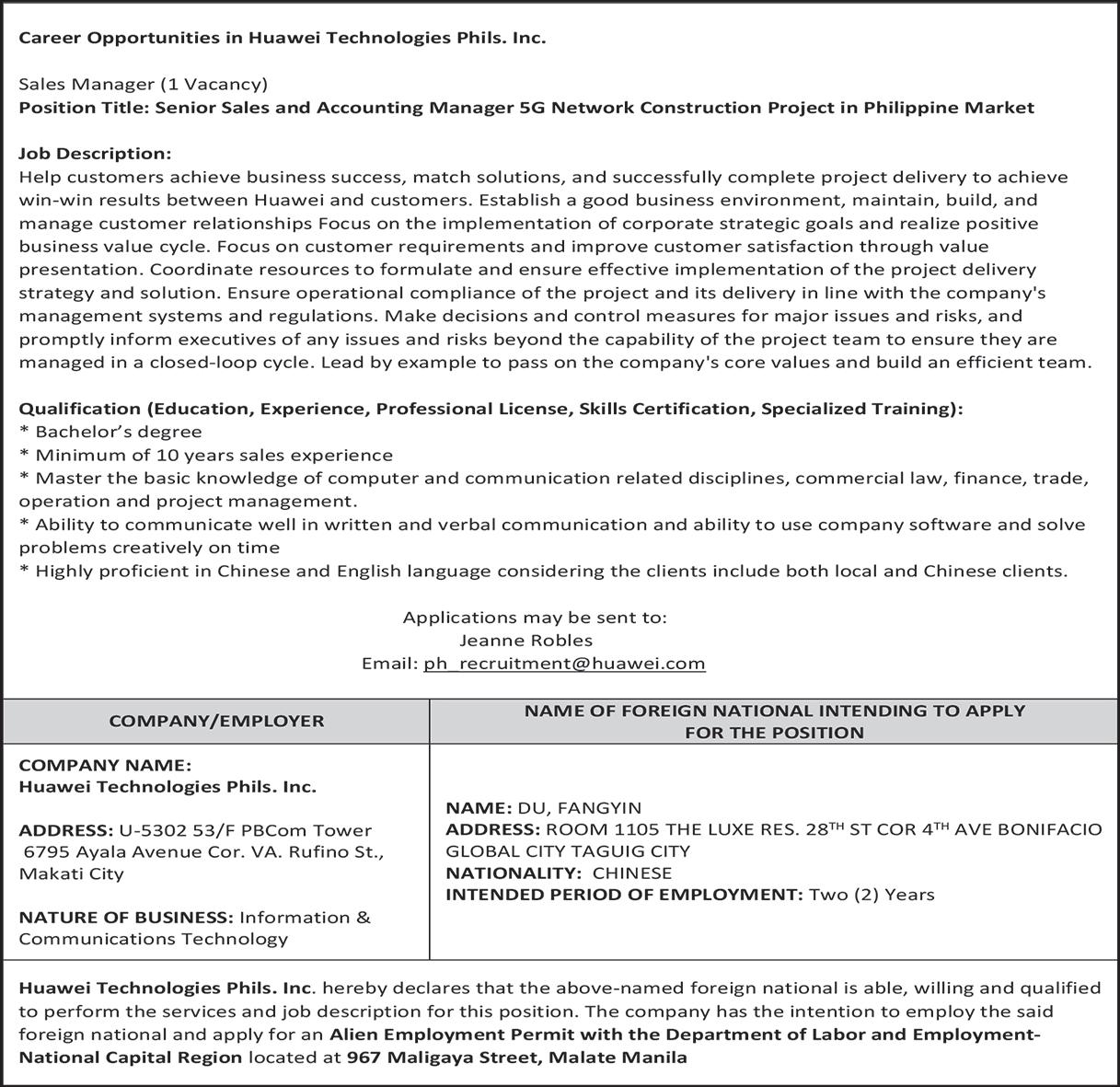
racked up huge losses after a PPA with Hydro forced it to start buying replacement power.
Cloud Snurran AB, which owns Overturingen, wrote in a 2023 report that the park was generating as much as 15% less electricity than had been expected. And at the height of the energy crisis in late 2022, Aldermyrberget struggled with low wind and ice on turbine blades, its owner said in an annual report. Citing “extraordinary weather conditions,” EB EEE LHI Vindkraftpark Aldermyrberget AB described its deal as “extremely unfavorable.”
Representatives for the owners of Overturingen and Aldermyrberget declined to comment for this article.
The operating company behind Markbygden Ett is planning to eventually sell the wind farm, said David Hargrave, a UK-based restructuring specialist who joined last September as chairman and director. He will look at entering a new deal “maybe of a PPA nature” or similar, he said in an interview. “In an ideal world you’ve got more certainty on your revenues than just being reliant on the day-to-day merchant prices,” Hargrave said.
PPAs will nevertheless remain important. In September, the European Commission’s Draghi report highlighted their role in boosting European competitiveness by offering price certainty to large industrial players.
Having seen wind parks struggle, said Alexander Esser, head
Somalia
SOMALIA has been a vocal supporter of the Palestinians, often hosting peaceful protests on its streets in support of them. The country joined the recent Arab summit that rejected Trump’s plan and seems like an unlikely destination for Palestinians, even if they did agree to move.
Sambu Chepkorir, a lawyer and conflict researcher in Nairobi, Kenya, said it is difficult to understand why Somalia would want to host Palestinians given the country’s strong support for Palestinian self-rule.
“The realignments keep
work of the assembly’s ethics body during the scandal, dubbed Qatargate—said Thursday the parliament’s reputation is again under threat.
“The risk of corruption in Brussels is high because the EU is so influential,” he said. “We need a complete investigation quickly, and finally reforms that will make the Parliament more resistant to corruption.”
of Nordics at Aurora Energy Research, operators are embracing “more flexible offtake agreements with more protection against volume and price risks.”
Customers are also changing their approach. While Hydro secured three new long-term PPAs in the fourth quarter, according to its last annual report, it also acknowledged in an email comment that the era of long and large PPAs is “probably over.” The company now plans to “work actively in the market and build a broad portfolio of smaller contracts.”
Matilda Afzelius, chief executive officer for the Nordic region at Renewable Energy Systems Holdings Ltd., said the industry needs to get smarter when it comes to financing massive green projects. “We’re dealing with a natural resource here that’s always changing,” she said. “Of course things can happen and go wrong.” Even after Markbygden Ett’s failure, however, the geographic area hasn’t lost its allure. Norway’s state-owned utility Statkraft AS snapped up a new wind project there as part of a portfolio in 2023. In December, it signed a memorandum of understanding with iron ore giant LKAB to sell power from the planned park. If it goes ahead, it could be ready by 2029. The location is excellent, said Jakob Norstrom, CEO of Statkraft in Sweden. But when signing a PPA, he struck a note of caution: “It’s important to find the right balance so you don’t promise too much.” Bloomberg News
changing, and so maybe there is a hidden agenda in why Somalia,” Chepkorir said.
A Somali official, speaking on condition of anonymity because he was not authorized to talk to the media, said the country had not been approached about taking in Palestinians from Gaza and there had been no discussions about it.
Lee reported from Washington, and Magdy reported from Cairo. Associated Press writers Evelyne Musambi in Nairobi, Kenya, and Sam Mednick in Dakar, Senegal, contributed to this report.
Before becoming Huawei’s EU public affairs director, Ottati was an assistant to two Italian MEPs who were both members of a European Parliament group dealing with China policy, Follow the Money reported.
Petrequin reported from Paris. Associated Press writers Lorne Cook in Brussels and Kelvin Chan in London contributed to this report.
According to Follow The Money, an investigative journalism platform, one of the main suspects in the probe is 41-year-old Valerio Ottati, a Belgian-Italian lobbyist who joined Huawei in 2019.
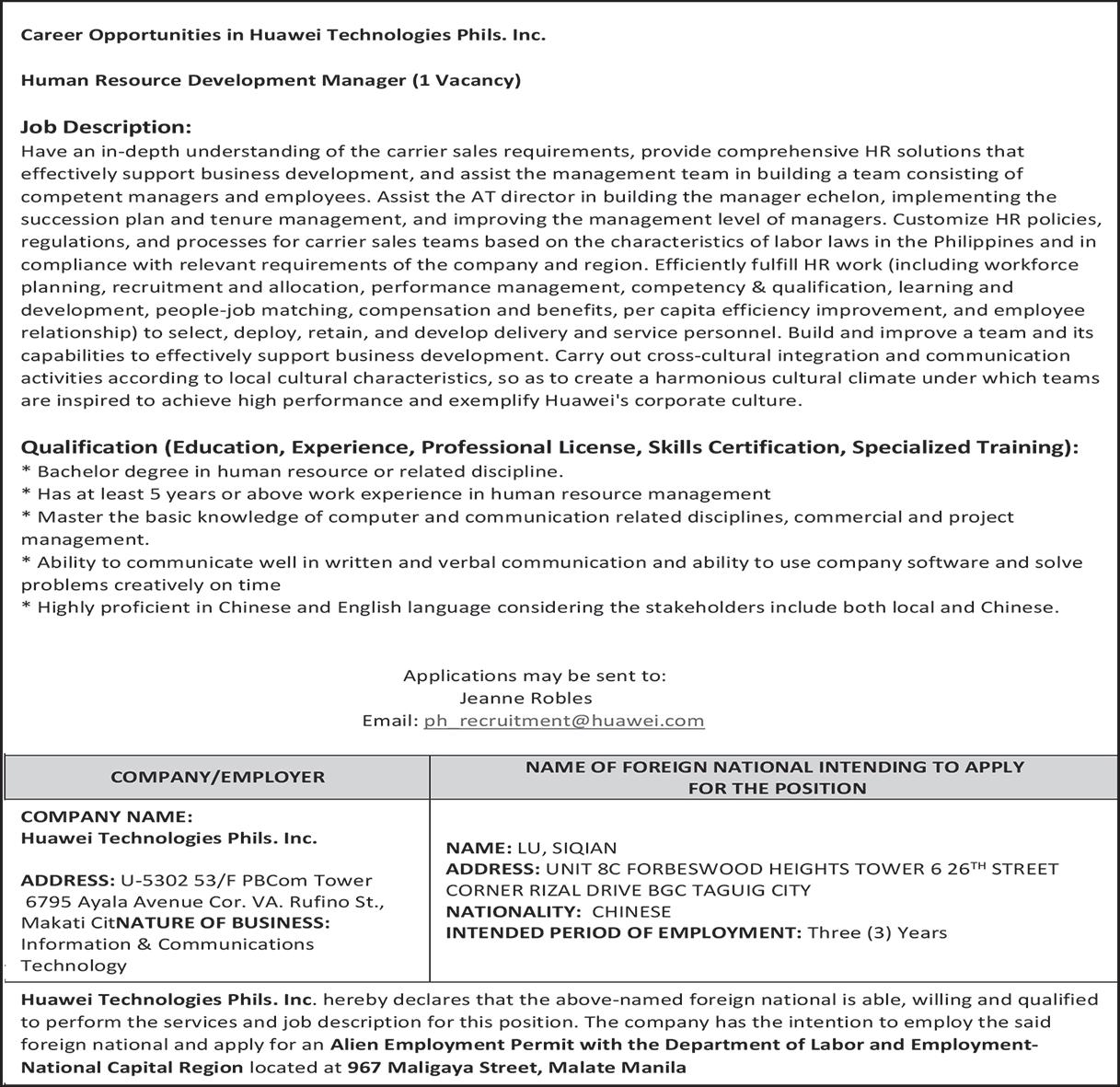
AN FRANCISCO—Stephen
SCurry’s shooting range and accuracy from way back have long stood alone—whether with a defender or two in his face or when letting it fly from the logo.
Now, the National Basketball Association’s (NBA) career leader in three-pointers has reached new territory from beyond the arc:
Golden State’s star guard is the first player in league history to reach 4,000 3s.
He did it a day before his 37th birthday. His 4,000th came from the right wing and under pressure off a pass from Moses Moody with 8:19 left in the third quarter—on his fourth attempt of the night. Fans jumped to their feet and roared when Curry made it, and a tribute played on the big screen during a timeout shortly after.
It included a congratulatory message from former Warriors big man Andris Biedrins of Latvia who dished out the assist on Curry’s first 3.
“I actually had I’d call it an emotional moment on the bench when I saw him. They didn’t tell me that they found him and got a video message from him. That was my vet when I was here my rookie year,” Curry said. “I would love to have quizzed our team on the the bench and see if anybody knew who that was because that was such a long time ago.... Really cool to kind of think back how far I’ve come from the first one to 4,000, which is crazy.”
The two-time NBA MVP needed two more from deep coming into Thursday night’s game against the rival Sacramento Kings at Chase Center. He hit his first from the left wing with 5:35 remaining in the opening quarter.
Smothered by Keegan Murray or DeMar DeRozan, Curry missed on his second attempt from near the top of the arc—after teammate Draymond Green scored the first six points on a pair of 3s and 7-footer Quinten Post also had two 3s. Curry hit the front rim with his next try, a 30-footer four minutes before halftime.
He could sense how everybody in the building couldn’t wait.
“I could feel the energy and the buzz from the beginning of the game after I made my first 3, even the second one I shot and missed it was an adrenaline rush, and they were with me every moment of the game tonight,” Curry said.
“When that second one went in I knew there was a lot of game left so I tried to not get too ahead of myself. But it was a special moment to feel that energy and allow them to enjoy that milestone and accomplishment with me.”
How might the team celebrate Curry’s latest milestone and birthday?
“What do you get for the guy who has everything? Maybe I’ll give him a day off,”
coach Steve Kerr said with a smile.
Every player received a special black T-shirt hanging in his locker commemorating the accomplishment.
Curry hit five 3s in Monday’s 130-120 win against Portland. His first career 3 came on October 30, 2009, at Phoenix.
Kings coach Doug Christie remembers when Reggie Miller’s numbers seemed astronomical.
“It was [2,560] with Reggie Miller and it was like, ‘Whoa, that’s out of control,’” Christie said before the game, then praised Curry.
“He’s changed the game in so many different ways, from seeing him as a little kid in Toronto shooting it from his hip to standing behind him on the sideline and he’s shooting it in your eye.
A lot of credit to him. That’s an incredible story. Know and played with his father, and watching his family, watching the man he’s become, the player, knowing the hours and the commitment that it takes to do something as great as he does it, is humbling in many ways. Massive, massive amount of respect.”
Curry, who became the 26th player in NBA history to score 25,000 points during last Saturday’s home win over Detroit, is in his 16th NBA season and showing no signs of stopping despite his occasional nights off to rest his tender knees. AP



(PSA),
Ochoa takes over from Philippine Star sports editor Nelson Beltran, whose term saw the PSA soar to newer heights. Rappler sports editor Jasmine Payo was named vice president while Manila Bulletin sports editor Ramon Bonilla was appointed secretary general. The other officers, who will serve a two-year term, are Spin.
PH’s Gerry Ramos (treasurer), Abante Tonite ’s Ramil Cruz (auditor) and Manila Times ’ Emil Noguera (assistant secretary). Beltran will chair the board, which includes sports editors Dodo Catacutan (Spin.PH), Rey Lachica ( Tempo), Jun Lomibao ( BusinessMirror ), Riera Mallari ( Manila Standard ), Jimmy Cantor ( Malaya), Celest Flores-Colina (Inquirer.net), Dino Maragay (PhilStar.com), Julius Manicad ( Daily Tribune), Ed Andaya ( People’s Tonight), Ferds delos Santos ( Abante) and Beth

Repizo ( Pilipino Star Ngayon) and assistant sports editors Musong R. Castillo ( Philippine Daily Inquirer) and Abac Cordero ( Philippine Star).
Ochoa, born in Cagayan de Oro but also traces his roots to Cebu, has been sports editor for the Inquirer for nearly a decade and is active in the journalism lecture circuit.
Among his plans is to fully implement the PSA charter drafted and approved during Beltran’s term and further enhancing the PSA’s public relevance.
The new officers and board will be inducted on Tuesday after the weekly PSA Forum.



By Josef Ramos
Uppsala Arena in Sweden.
Obiena couldn’t go higher than 5.65 meters as he missed clearing 5.80 meters thrice—a height that used to be mincemeat for the former world No. 3 and current Asian champion.
He’s now looking forward to his outdoor campaign.
“It’s supposed to be this will be my last indoor competition this season as I will put all my best in training to rediscover my old form for the coming outdoor season,” Obiena told BusinessMirror on Friday.
Olympic and world champion and record holder Armand Duplantis of
Sweden easily cleared 6.05m to win his third indoor title this year. Greece’s Emmanouil Karalis got silver at 6.0m and the US’s Sam Kendrick claimed bronze at 5.90m. Obiena booked two outdoor victories at the Meeting Metz Moselle Athlelor in France and Orlen Copernicus Cup in Poland last month and had a silver medal in International Springer in Cottbus, Germany.
He couldn’t hit 5.85m though and won’t compete at the world indoor championships in Nanjing later this month.
Australia’s Kurtis Marschall was fourth in Sweden at 5.90m followed by France’s Thibaut Collet (5.90), Kendrick (5.90), Norway’s Sondra Guttormsen (5.80) and Turkiye’s Ersu Sasma (5.80).
Belgium’s Ben Broeders and France’s Renaud Lavillenie also cleared 5.65m but finished behind Obiena after the countback.
Jimenez Salas via second-round technical knockout last September and Ruben Tostado Garcia via fifth-round also by technical knockout last December. He remains undefeated in 25 fights with 20 knockouts. International matchmaker Sean Gibbons,
Tits Women in Sports (WIS) program—will honor 140 outstanding Filipina athletes, coaches and sports leaders in the 2025 All-Women Sports Awards on Saturday at the Century Park Hotel in Manila. The awards coincides with the celebration of Women’s Month and will commence at 2 p.m. Held in collaboration with the Philippine Commission on Women, the event highlights the PSC’s commitment to gender inclusivity in sports and will honor a diverse group of women who have made significant contributions to the industry, including Paris 2024 Olympic delegates, top sports executives, pioneering female coaches and women spearheading unique sports initiatives. “This awards is more than just a celebration but a tribute to the progress we’ve made in women’s sports,” PSC commissioner Olivia “Bong” Coo said. “We want to honor not only our athletes but also the
first overseas fight was in Mexico where he beat locals Anthony